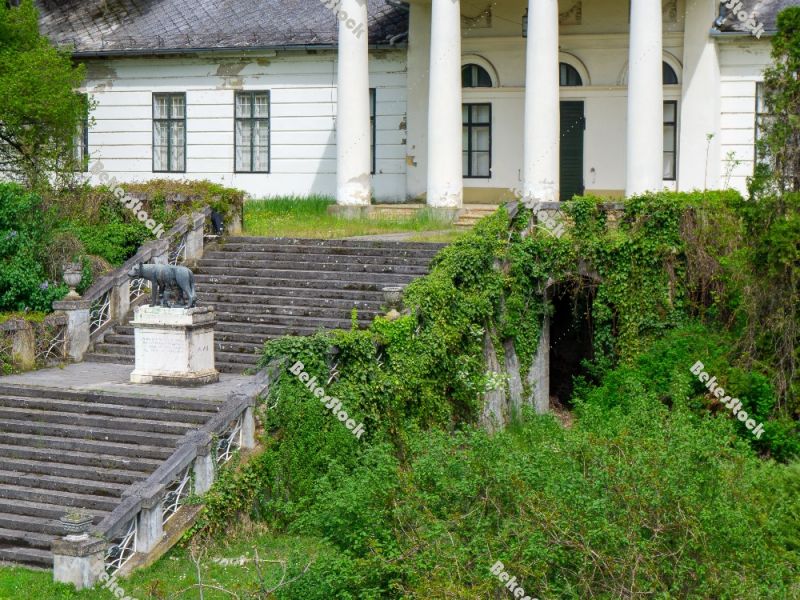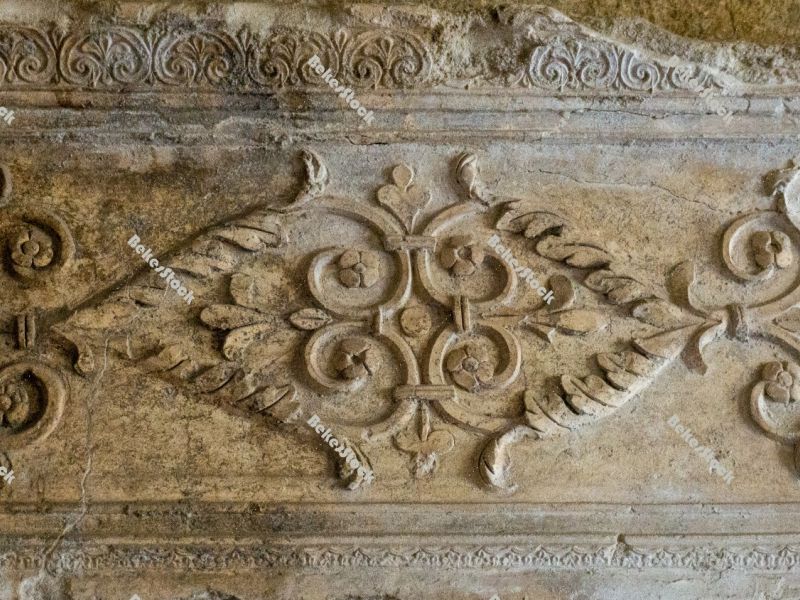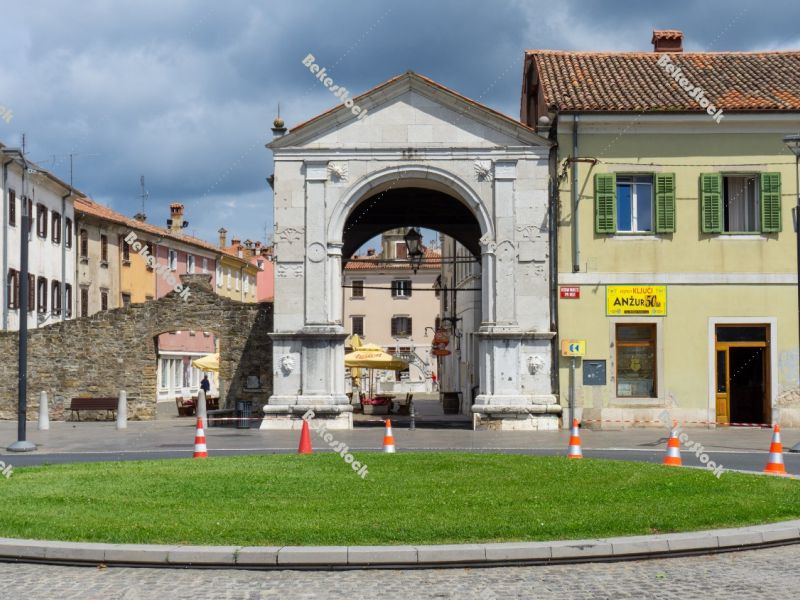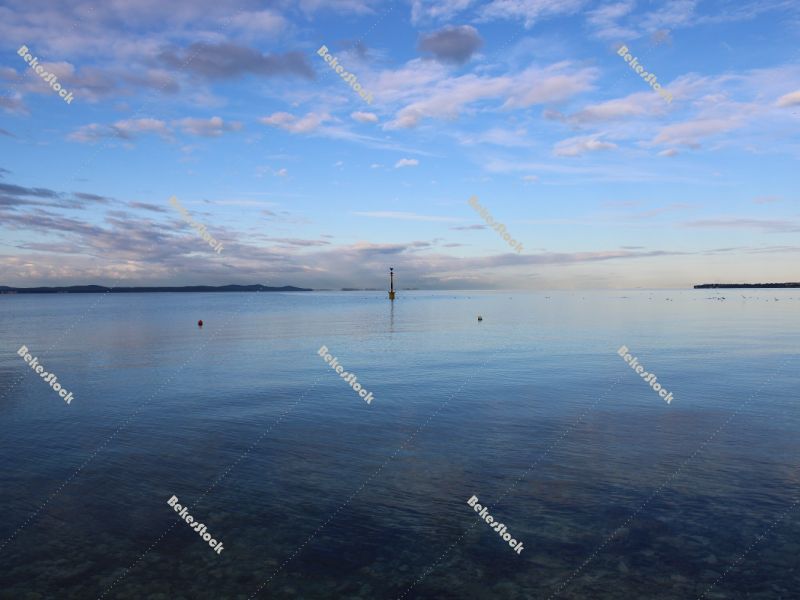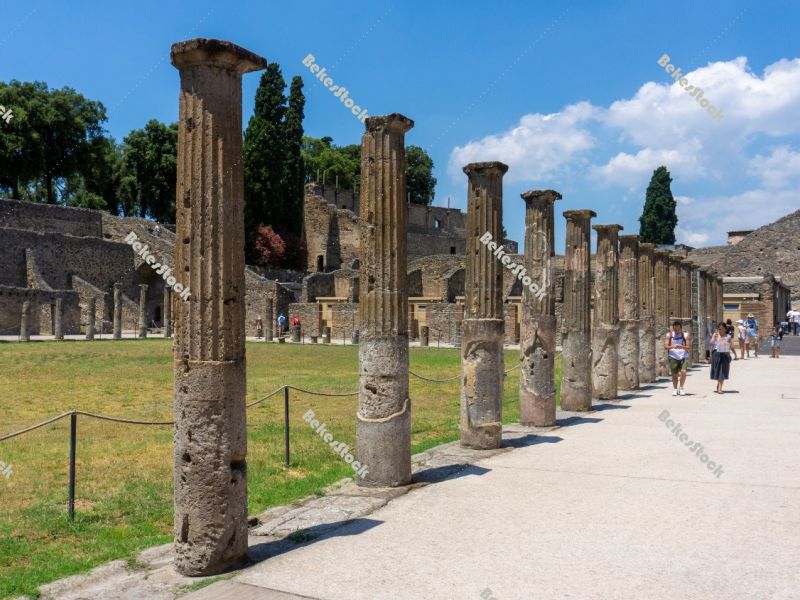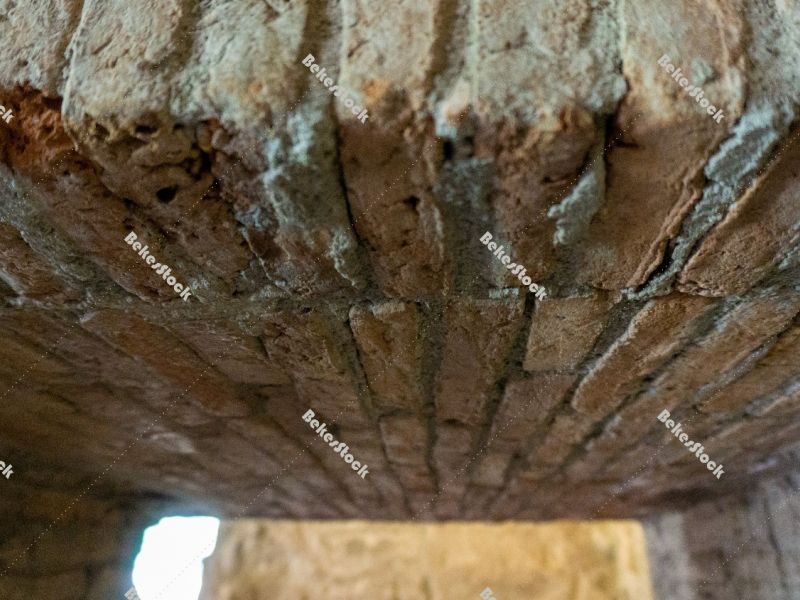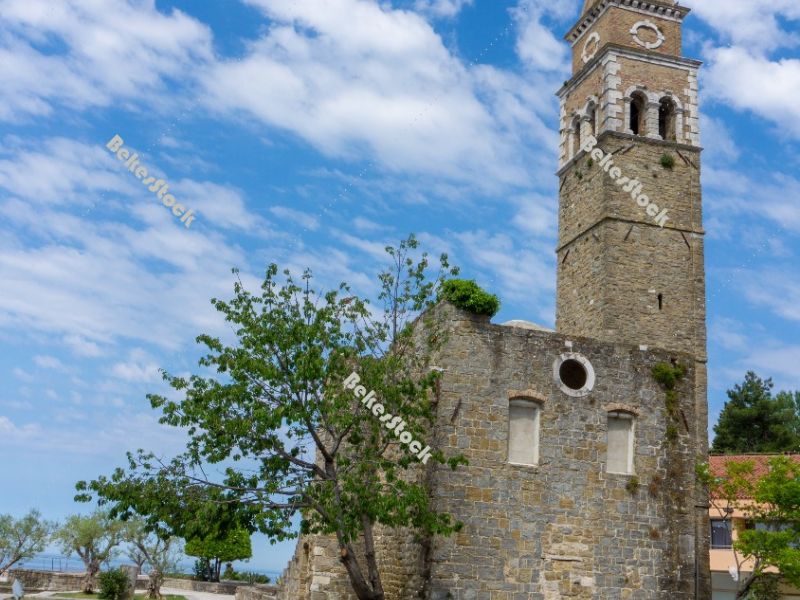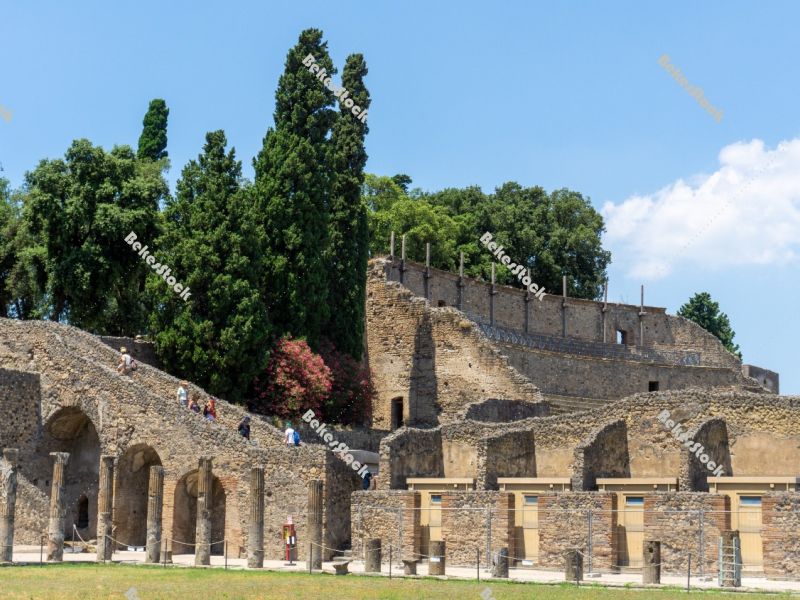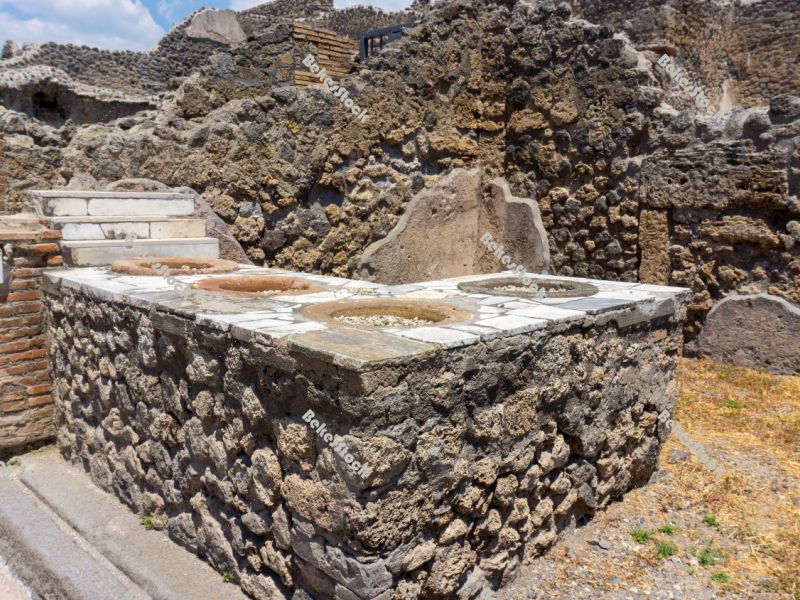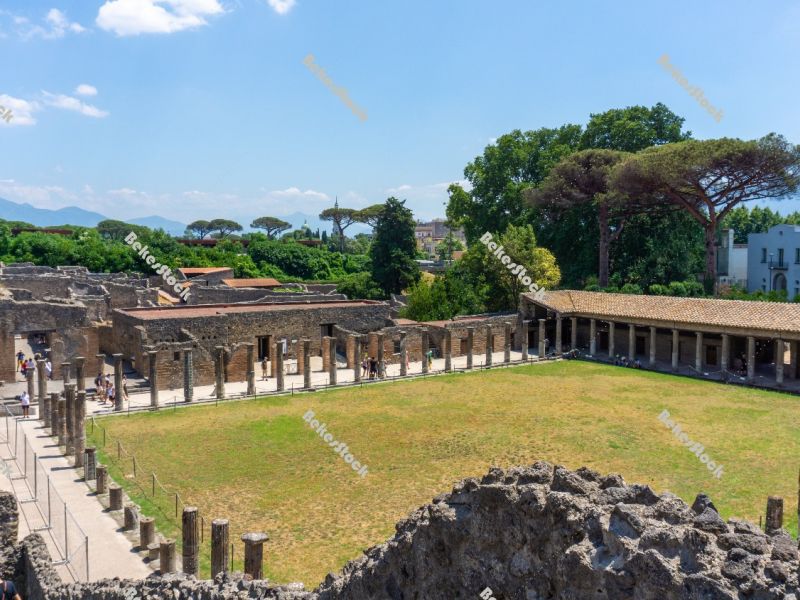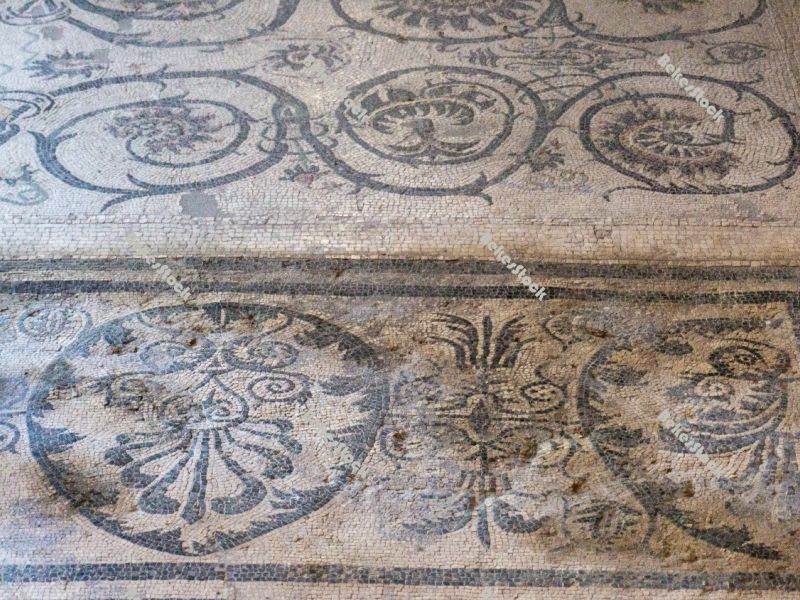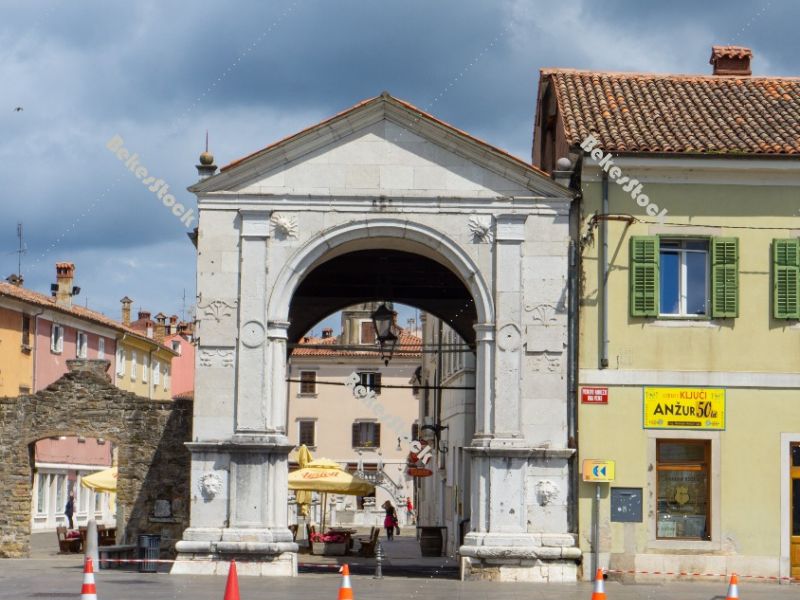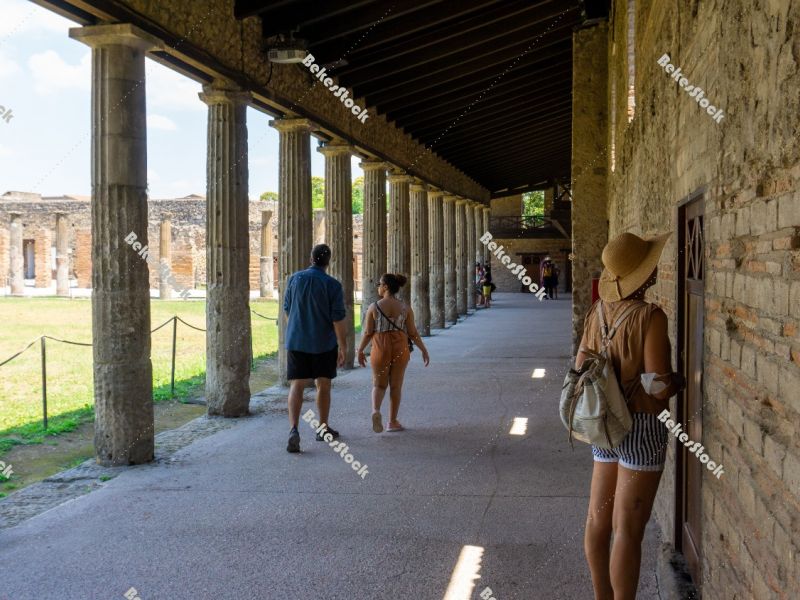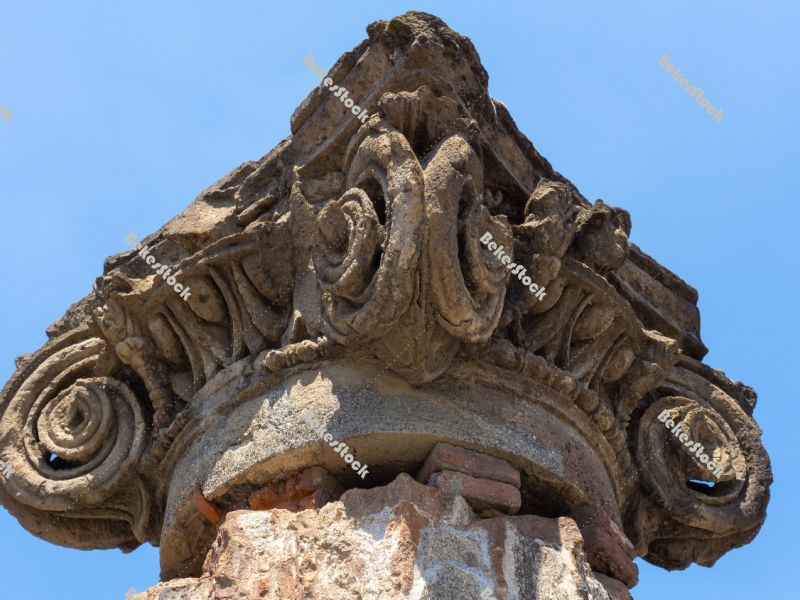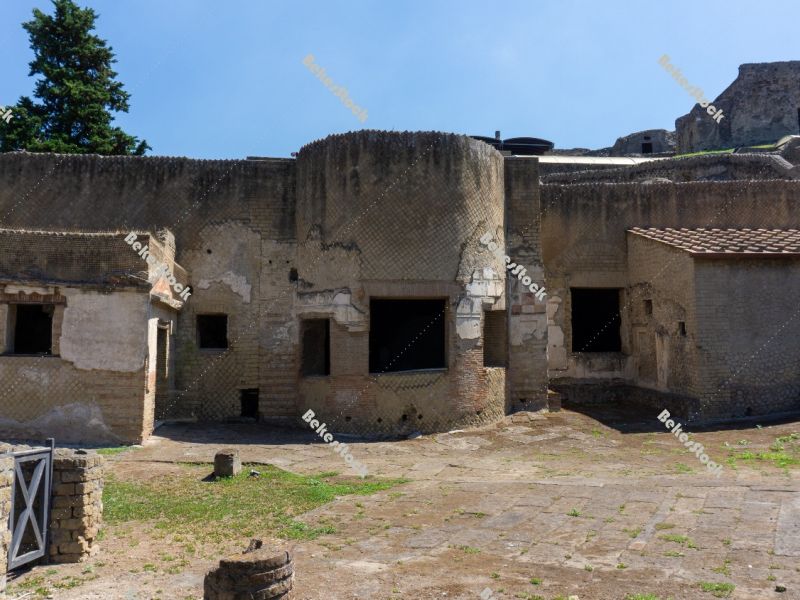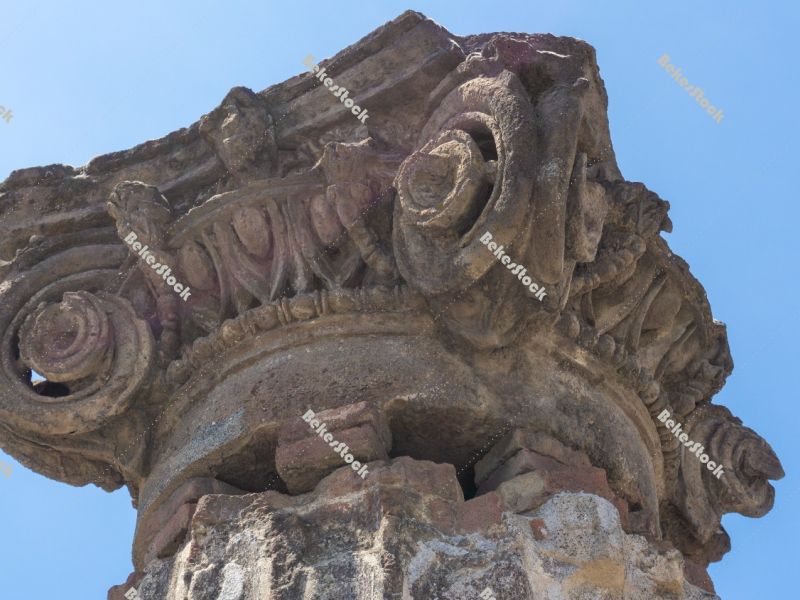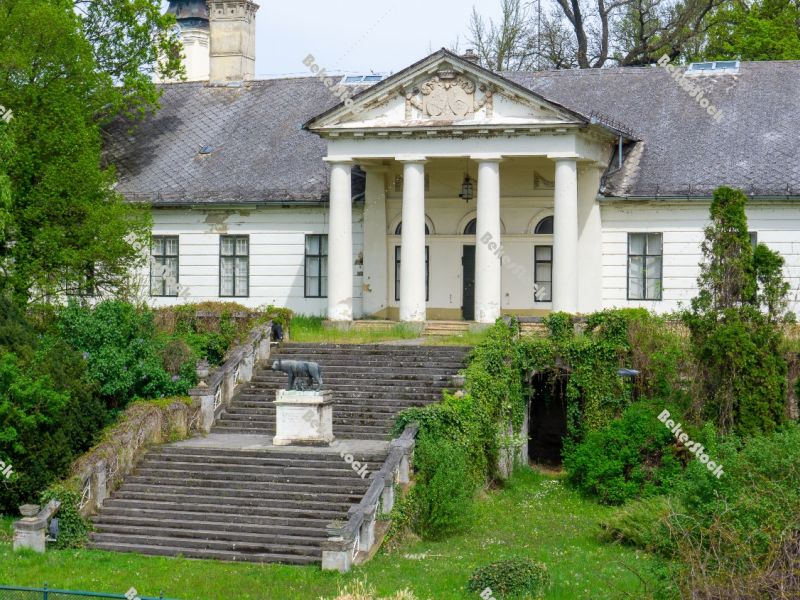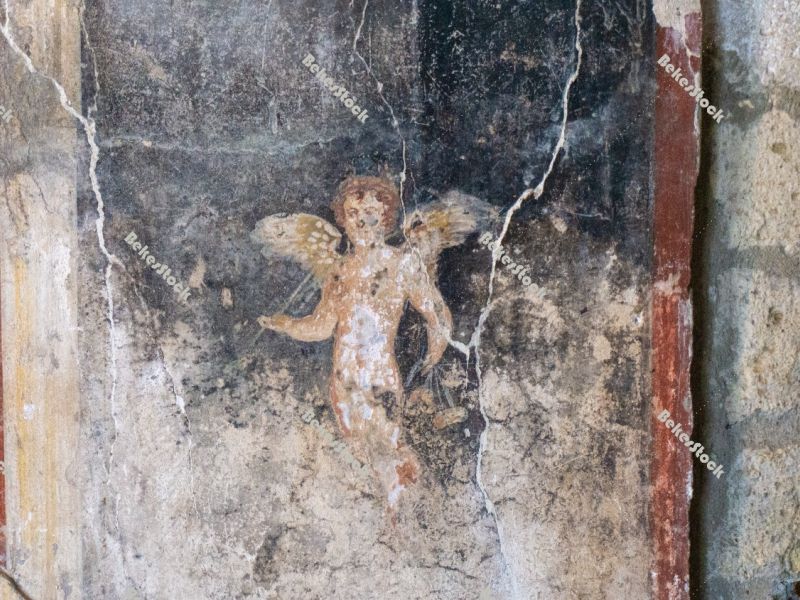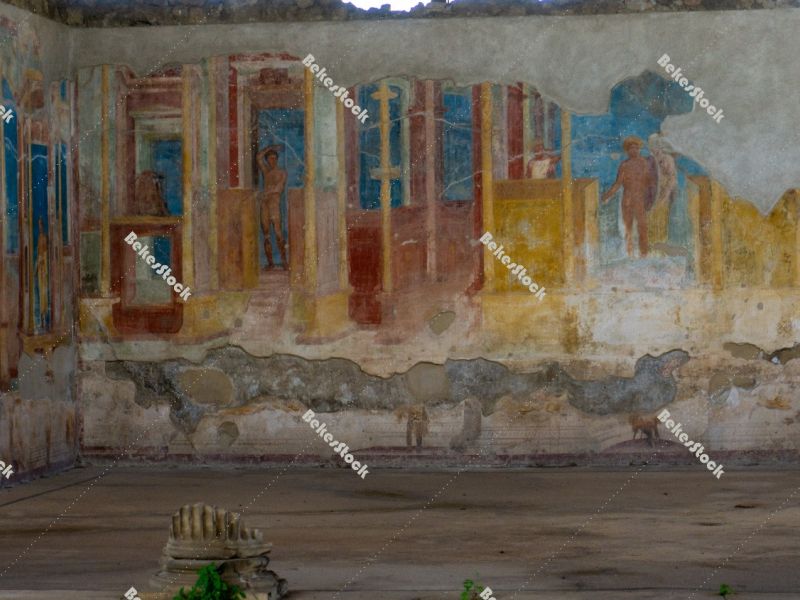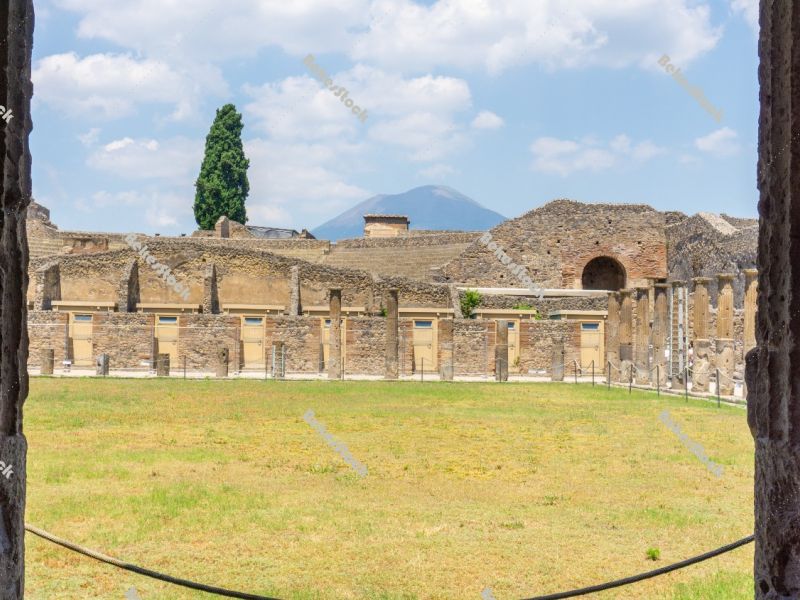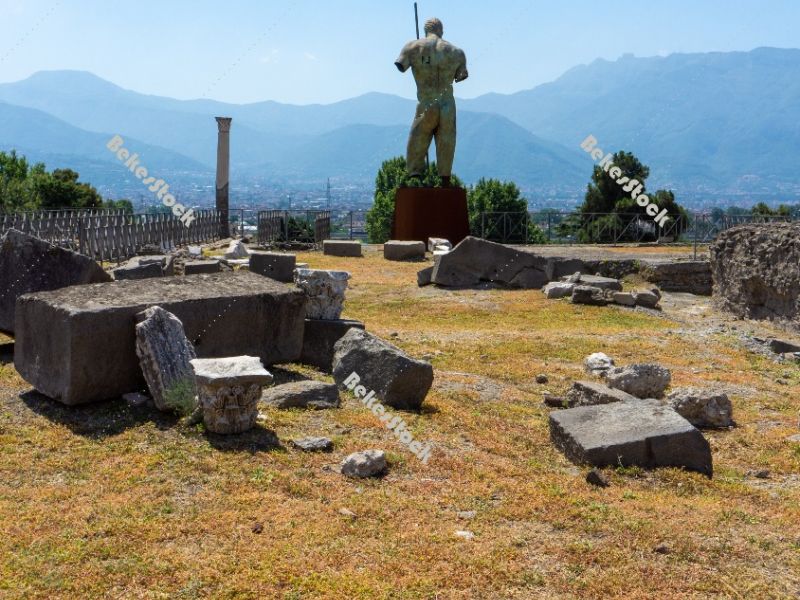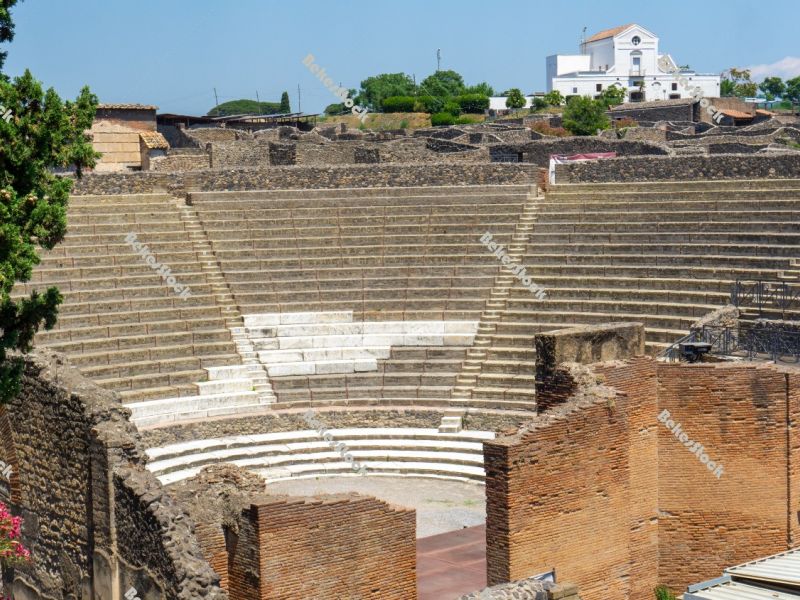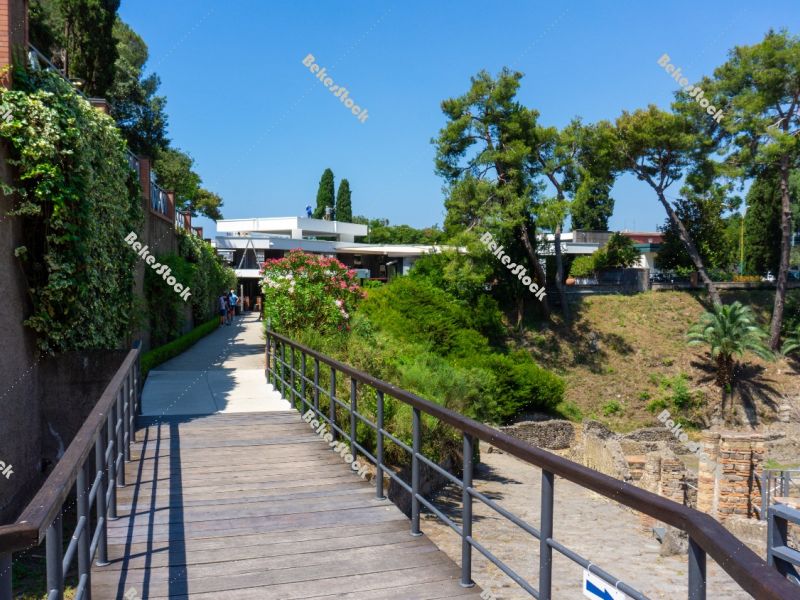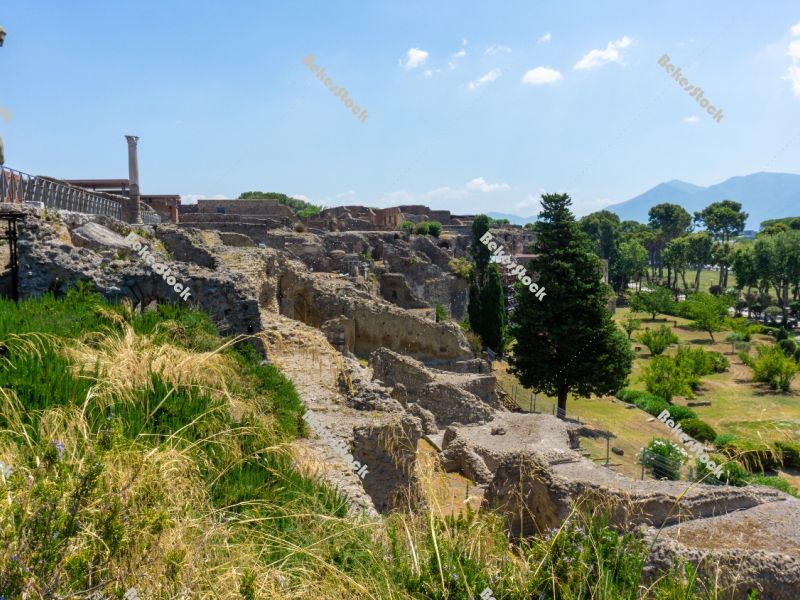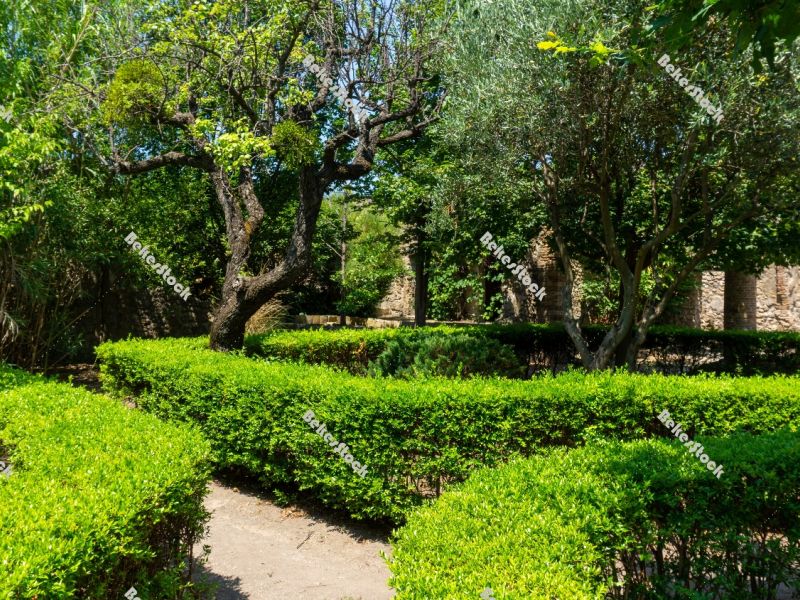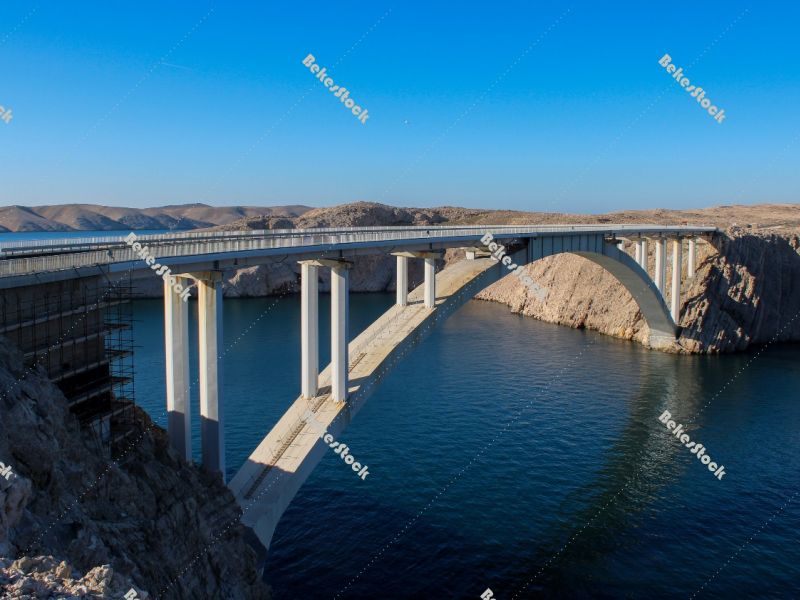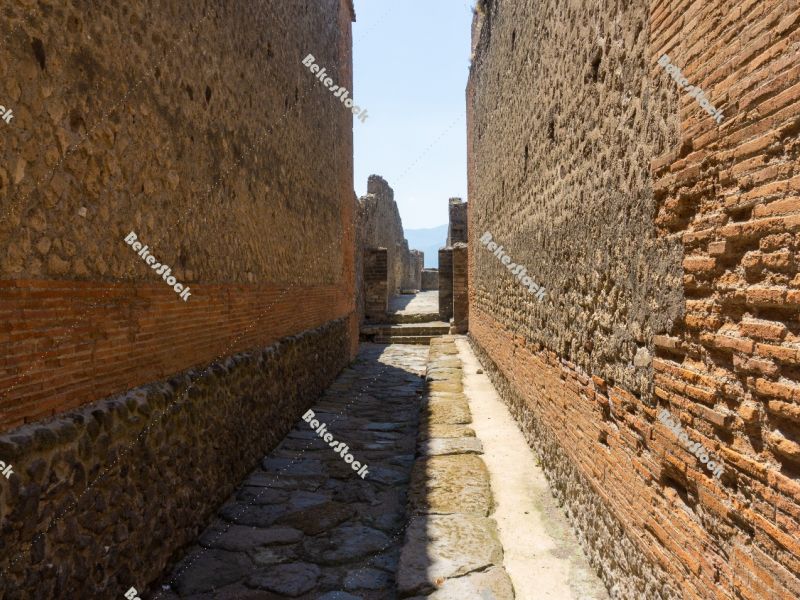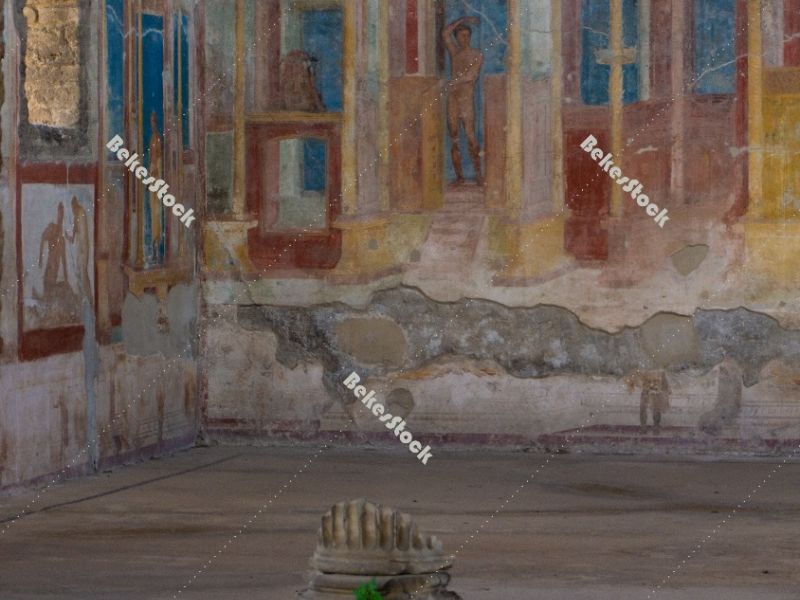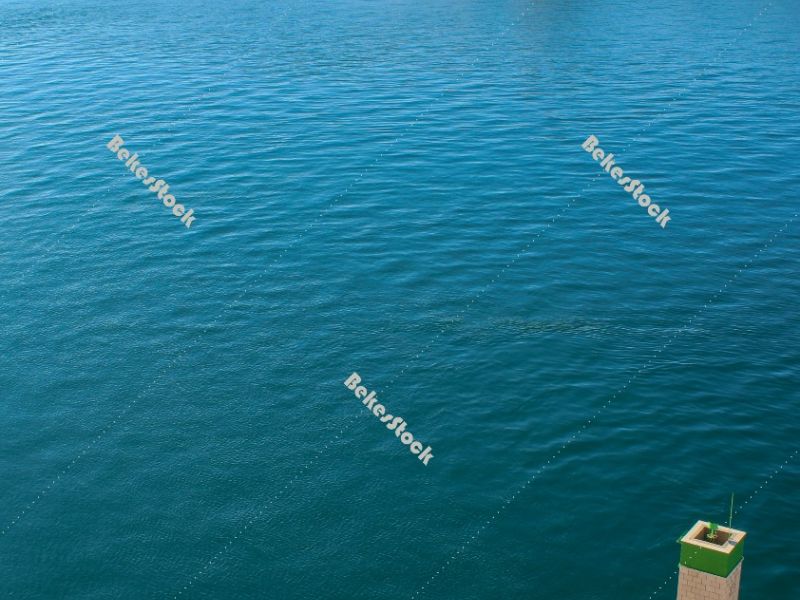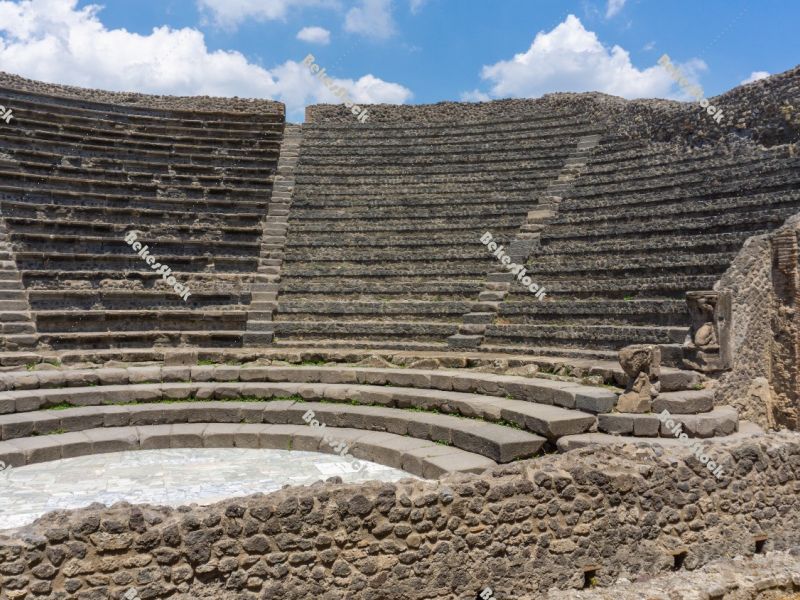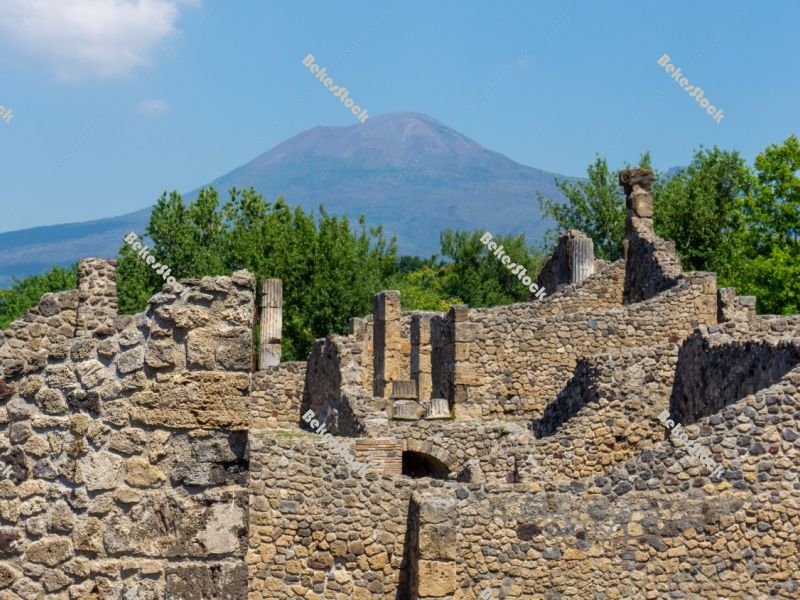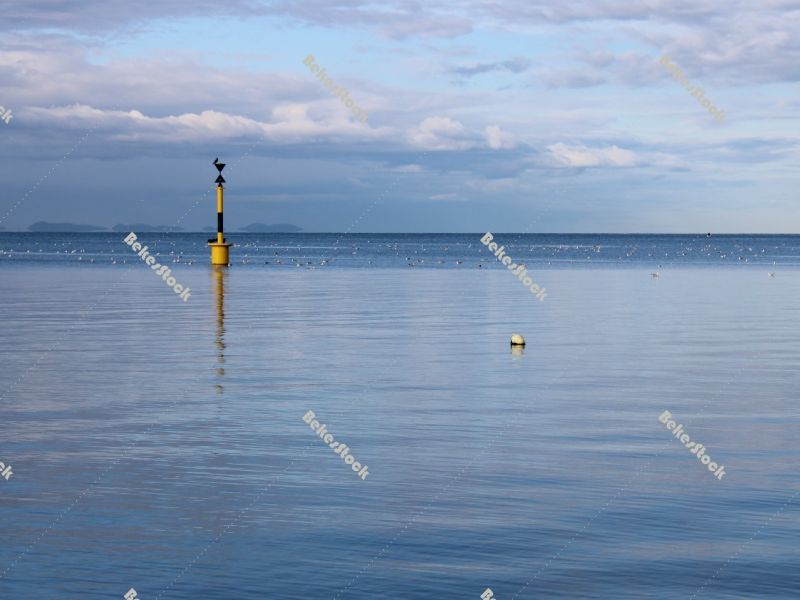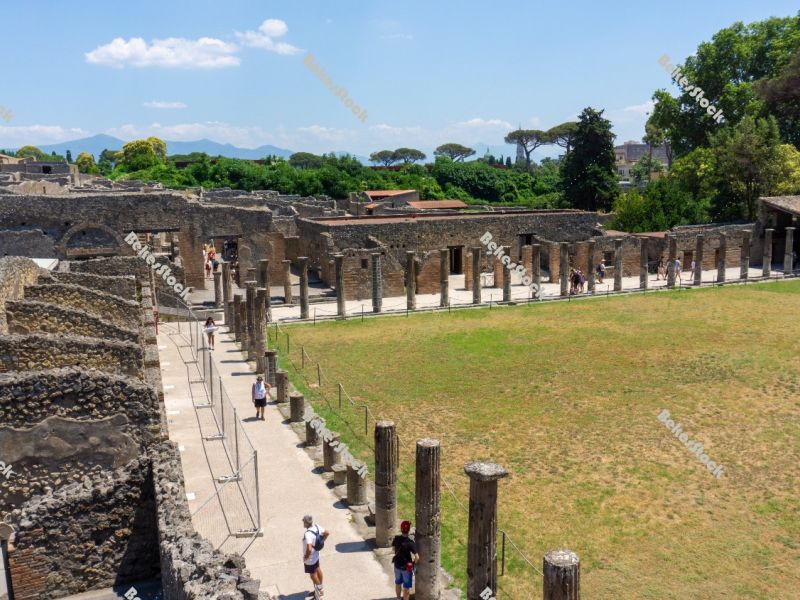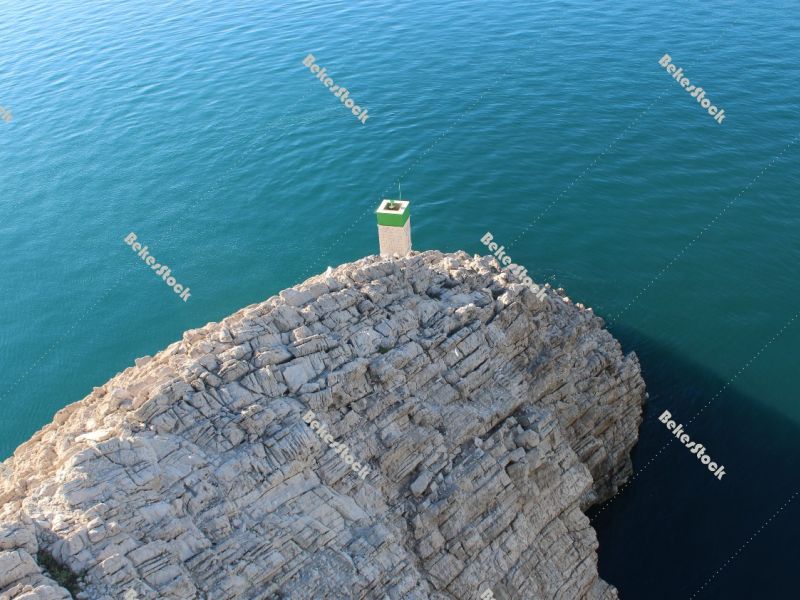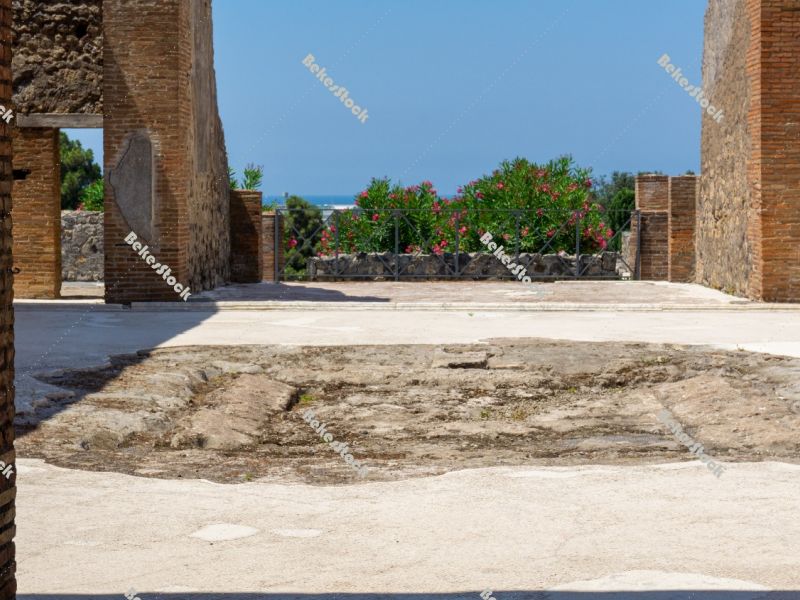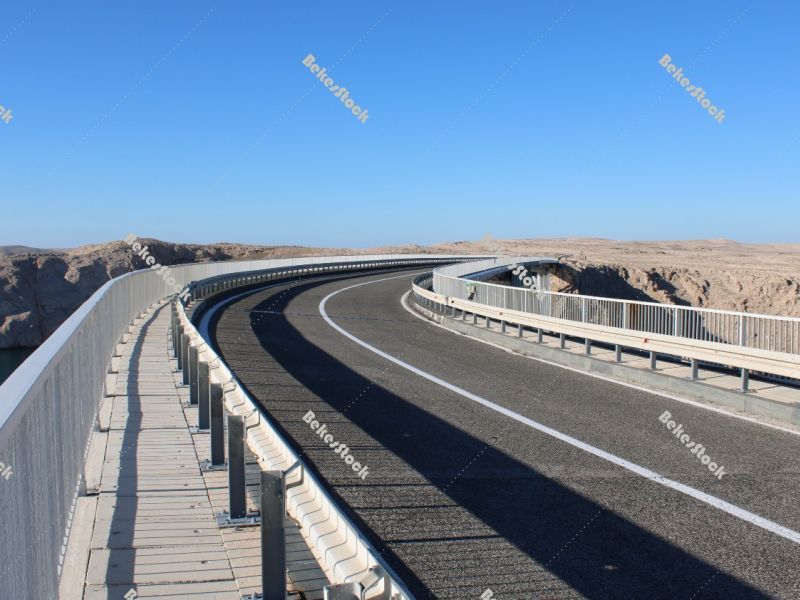Image Tags - main
-
Bolza Castle (`Bolza-kastély`). Szarvas, Bekes County, Hungary Bolza Castle (`Bolza-kastély`). Szarvas, Bekes County, Hungary
Bolza Castle (`Bolza-kastély`). The Bolza family was of Italian origin and settled in Hungary in the 18th century through marriage. Over the years they assimilated and became highly respected by the citizens of Szarvas. As a matter of fact, the Bolza family left behind a rich legacy, the most spectacular of which is the Bolza Castle. At the bottom of the stairs – as a remainder of the family’s Italian origin – Pál Bolza erected a replica of the wolf statue of Romulus and Remus, the legendary founders of Rome. Szarvas, Bekes county (Bekes megye), Hungary, May 2021. @bekesstock @csabaprog
hungary spring szarvastown cultural wolf bekes county bekesstock stairs szarvas italian mansion remus may bekes bekes megye view castle tradition szarvas town landscape 2021 tourism replica landmark building csabaprog outdoor vacation exterior town romulus rome famous bolza pál historical citizen palace travel statue house history citizens family bolza europe szarvasvaros renovated szarvasvárosBolza Castle (`Bolza-kastély`). The Bolza family was of Italian origin and settled in Hungary in the 18th century through marriage. Over the years they assimilated and became highly respected by the citizens of Szarvas. As a matter of fact, the Bolza family left behind a rich legacy, the most spectacular of which is the Bolza Castle. At the bottom of the stairs – as a remainder of the family’s Italian origin – Pál Bolza erected a replica of the wolf statue of Romulus and Remus, the legendary founders of Rome. Szarvas, Bekes county (Bekes megye), Hungary, May 2021. @bekesstock @csabaprog
hungary spring szarvastown cultural wolf bekes county bekesstock stairs szarvas italian mansion remus may bekes bekes megye view castle tradition szarvas town landscape 2021 tourism replica landmark building csabaprog outdoor vacation exterior town romulus rome famous bolza pál historical citizen palace travel statue house history citizens family bolza europe szarvasvaros renovated szarvasváros -
Wall decoration, stucco in the Suburban Baths in Pompeii. Pompei Wall decoration, stucco in the Suburban Baths in Pompeii. Pompei
Wall decoration, stucco in the Suburban Baths in Pompeii. The Suburban Baths, located immediately beneath the Marina Gate. The Suburban Baths were private. The thermal areas have sumptuous decorations. Pompeii was an ancient city located in what is now the comune of Pompei near Naples in the Campania region of Italy. Pompeii, along with Herculaneum and many villas in the surrounding area, was buried under 4 to 6 m of volcanic ash and pumice in the eruption of Mount Vesuvius in AD 79 (1st century). Pompei, Campania, Italy, July 2020. @csabaprog
csabaprog decay gods city tourist architectural sightseeing italian empire ash paved vesuvious building vesuvius old landmark excavation villa vacation town eruption rome historical disaster ruins 1st house history archaeology demolished tessellation catastrophe destroyed bella volcano roman dei journey mysteries trip vesuvio wall historic ruined century europe scenary mount art napoli died symbol overlooked mediterranean naples architecture colorful excursion ancient romanesque famous buried unesco interior beautiful travel remains decorated decoration walls misteri stone tourism houses archeological italyWall decoration, stucco in the Suburban Baths in Pompeii. The Suburban Baths, located immediately beneath the Marina Gate. The Suburban Baths were private. The thermal areas have sumptuous decorations. Pompeii was an ancient city located in what is now the comune of Pompei near Naples in the Campania region of Italy. Pompeii, along with Herculaneum and many villas in the surrounding area, was buried under 4 to 6 m of volcanic ash and pumice in the eruption of Mount Vesuvius in AD 79 (1st century). Pompei, Campania, Italy, July 2020. @csabaprog
csabaprog decay gods city tourist architectural sightseeing italian empire ash paved vesuvious building vesuvius old landmark excavation villa vacation town eruption rome historical disaster ruins 1st house history archaeology demolished tessellation catastrophe destroyed bella volcano roman dei journey mysteries trip vesuvio wall historic ruined century europe scenary mount art napoli died symbol overlooked mediterranean naples architecture colorful excursion ancient romanesque famous buried unesco interior beautiful travel remains decorated decoration walls misteri stone tourism houses archeological italy -
The Muda city gate (`Vrata Muda`). Koper, Slovenia, June 2020 The Muda city gate (`Vrata Muda`). Koper, Slovenia, June 2020
The Muda city gate (`Vrata Muda`). One of the main attractions of Koper is definitely the Muda Gate (`Vrata Muda`) – one of the main gates and the only still preserved city gate (of the former twelve gates of the external defensive wall), which was built in 1516, in the Renaissance style. Koper, Slovenia, June 2020. @csabaprog
csabaprog arch city 2020 renaissance sea slovenian adriatic muda attraction touristic istria fortification vrata style gate antique yellow capodistria europe june adria summer town building obzidje exterior old landmark house mediterranean cityscape vacation attractions capital blue culture koper slovenia colorful classic sky travel cloud 1516 outdoor landscape green koprsko tourism architecture tripThe Muda city gate (`Vrata Muda`). One of the main attractions of Koper is definitely the Muda Gate (`Vrata Muda`) – one of the main gates and the only still preserved city gate (of the former twelve gates of the external defensive wall), which was built in 1516, in the Renaissance style. Koper, Slovenia, June 2020. @csabaprog
csabaprog arch city 2020 renaissance sea slovenian adriatic muda attraction touristic istria fortification vrata style gate antique yellow capodistria europe june adria summer town building obzidje exterior old landmark house mediterranean cityscape vacation attractions capital blue culture koper slovenia colorful classic sky travel cloud 1516 outdoor landscape green koprsko tourism architecture trip -
Buoy on the Adriatic coast, Zadar, December 2019. Buoy on the Adriatic coast, Zadar, December 2019.
Buoy on the Adriatic coast, Zadar, December 2019. Morning lights in the sea, cloudy sky, the background of the mainland.
Buoy on the Adriatic coast, Zadar, December 2019. Morning lights in the sea, cloudy sky, the background of the mainland.
-
Church of St Bernardine - 'Cerkev sv. Bernardina', Portoroz, Pir Church of St Bernardine - 'Cerkev sv. Bernardina', Portoroz, Pir
Church of St Bernardine - 'Cerkev sv. Bernardina'. The remains of the former monastery comprise a well-preserved and eminent bell tower, the church presbytery and the retaining wall complete with arches. The monastery and the church date back to the 15th century and are dedicated to St Bernardine of Siena. Activities in the monastery ended in the 19th century and the Austrian military later used the complex as a stronghold, from which soldiers defended the bay. Later, the building was the seat of the tax administration as well as the customs office. Portoroz, Piran, Obalno-kraska, Slovenia, June 2020.
square sunny presbytary church balkan 2020 bell obalno-kraska bernardina adriatic sv tree christianity monastery sky 15th june coast europe adria portorose cerkev adriatic sea bernardin laguna piran roses century mediterranean outdoor vacation bernardine town blue siena exterior slovenia portoroz religious sea travel tower house building st green summer tourism barnardina seasideChurch of St Bernardine - 'Cerkev sv. Bernardina'. The remains of the former monastery comprise a well-preserved and eminent bell tower, the church presbytery and the retaining wall complete with arches. The monastery and the church date back to the 15th century and are dedicated to St Bernardine of Siena. Activities in the monastery ended in the 19th century and the Austrian military later used the complex as a stronghold, from which soldiers defended the bay. Later, the building was the seat of the tax administration as well as the customs office. Portoroz, Piran, Obalno-kraska, Slovenia, June 2020.
square sunny presbytary church balkan 2020 bell obalno-kraska bernardina adriatic sv tree christianity monastery sky 15th june coast europe adria portorose cerkev adriatic sea bernardin laguna piran roses century mediterranean outdoor vacation bernardine town blue siena exterior slovenia portoroz religious sea travel tower house building st green summer tourism barnardina seaside -
Cloister - QUADRIPORTICUS OF THE THEATRES OR GLADIATORS BARRACKS Cloister - QUADRIPORTICUS OF THE THEATRES OR GLADIATORS BARRACKS
Cloister - QUADRIPORTICUS OF THE THEATRES OR GLADIATORS BARRACKS in Pompeii. Behind the scene of the Large Theatre there is a large quadrangle surrounded by 74 Doric grey tuff columns of Nocera used as a foyer, an area where the spectators could stop during the intervals of the theatre shows. After the earthquake of 62 AD the building changed its function and became a barracks for gladiators, which resulted in certain parts of the building being reorganised. The most important rooms were those on the eastern side whereas the rooms upstairs may have been the apartments of the undertaker of the gladiators. Pompeii was an ancient city located in what is now the comune of Pompei near Naples in the Campania region of Italy. Pompeii, along with Herculaneum and many villas in the surrounding area, was buried under 4 to 6 m of volcanic ash and pumice in the eruption of Mount Vesuvius in AD 79 (1st century). Pompei, Naples (Napoli), Campania, Italy, July 2020. @csabaprog
ornament csabaprog decay gladiator city tourist architectural door sightseeing italian empire naples paved barrack teatro houses building vesuvius old landmark excavation vacation town eruption rome historical disaster ruins 1st house history archaeology ancient catastrophe destroyed volcano theatre doric roman journey trip vesuvio column tall ruined scenary mount died century mediterranean vesuvious architecture europe napoli romanesque famous buried unesco excursion beautiful travel remains ash overlooked stone colorful historic tourism demolished archeological italyCloister - QUADRIPORTICUS OF THE THEATRES OR GLADIATORS BARRACKS in Pompeii. Behind the scene of the Large Theatre there is a large quadrangle surrounded by 74 Doric grey tuff columns of Nocera used as a foyer, an area where the spectators could stop during the intervals of the theatre shows. After the earthquake of 62 AD the building changed its function and became a barracks for gladiators, which resulted in certain parts of the building being reorganised. The most important rooms were those on the eastern side whereas the rooms upstairs may have been the apartments of the undertaker of the gladiators. Pompeii was an ancient city located in what is now the comune of Pompei near Naples in the Campania region of Italy. Pompeii, along with Herculaneum and many villas in the surrounding area, was buried under 4 to 6 m of volcanic ash and pumice in the eruption of Mount Vesuvius in AD 79 (1st century). Pompei, Naples (Napoli), Campania, Italy, July 2020. @csabaprog
ornament csabaprog decay gladiator city tourist architectural door sightseeing italian empire naples paved barrack teatro houses building vesuvius old landmark excavation vacation town eruption rome historical disaster ruins 1st house history archaeology ancient catastrophe destroyed volcano theatre doric roman journey trip vesuvio column tall ruined scenary mount died century mediterranean vesuvious architecture europe napoli romanesque famous buried unesco excursion beautiful travel remains ash overlooked stone colorful historic tourism demolished archeological italy -
Street (`via`) in Pompeii. The narrow street is lined with stone Street (`via`) in Pompeii. The narrow street is lined with stone
Street (`via`) in Pompeii. The narrow street (`strada`) is lined with stone walls. Pompeii was an ancient city located in what is now the comune of Pompei near Naples in the Campania region of Italy. Pompeii, along with Herculaneum and many villas in the surrounding area, was buried under 4 to 6 m of volcanic ash and pumice in the eruption of Mount Vesuvius in AD 79 (1st century). Pompei, Naples (Napoli), Campania, Italy, July 2020. @csabaprog
csabaprog decay street city tourist architectural sightseeing italian empire ash paved houses building vesuvius old landmark excavation vacation town eruption rome historical disaster ruins 1st house history archaeology demolished catastrophe destroyed via volcano roman way journey trip vesuvio wall ruined historic scenary mount landscape europe died architecture century mediterranean overlooked stone ancient unesco strada romanesque famous buried colorful excursion beautiful travel naples napoli remains walls symbol brick tourism vesuvious archeological italyStreet (`via`) in Pompeii. The narrow street (`strada`) is lined with stone walls. Pompeii was an ancient city located in what is now the comune of Pompei near Naples in the Campania region of Italy. Pompeii, along with Herculaneum and many villas in the surrounding area, was buried under 4 to 6 m of volcanic ash and pumice in the eruption of Mount Vesuvius in AD 79 (1st century). Pompei, Naples (Napoli), Campania, Italy, July 2020. @csabaprog
csabaprog decay street city tourist architectural sightseeing italian empire ash paved houses building vesuvius old landmark excavation vacation town eruption rome historical disaster ruins 1st house history archaeology demolished catastrophe destroyed via volcano roman way journey trip vesuvio wall ruined historic scenary mount landscape europe died architecture century mediterranean overlooked stone ancient unesco strada romanesque famous buried colorful excursion beautiful travel naples napoli remains walls symbol brick tourism vesuvious archeological italy -
The door is a brick ceiling in the Suburban Baths in Pompeii. Po The door is a brick ceiling in the Suburban Baths in Pompeii. Po
The door is a brick ceiling in the Suburban Baths. The Suburban Baths, located immediately beneath the Marina Gate. The Suburban Baths were private. The thermal areas have sumptuous decorations. Pompeii was an ancient city located in what is now the comune of Pompei near Naples in the Campania region of Italy. Pompeii, along with Herculaneum and many villas in the surrounding area, was buried under 4 to 6 m of volcanic ash and pumice in the eruption of Mount Vesuvius in AD 79 (1st century). Pompei, Campania, Italy, July 2020. @csabaprog
csabaprog decay city tourist architectural sightseeing italian empire naples paved houses building vesuvius old landmark excavation villa vacation town eruption rome historical disaster ruins 1st house history napoli demolished catastrophe destroyed bella volcano roman ceiling journey misteri trip vesuvio wall archaeology stone vesuvious europe scenary mount brick overlooked died mysteries century mediterranean walls remains colorful ancient historic romanesque famous buried unesco excursion beautiful travel interior decorated decoration architecture ash symbol tourism ruined archeological italyThe door is a brick ceiling in the Suburban Baths. The Suburban Baths, located immediately beneath the Marina Gate. The Suburban Baths were private. The thermal areas have sumptuous decorations. Pompeii was an ancient city located in what is now the comune of Pompei near Naples in the Campania region of Italy. Pompeii, along with Herculaneum and many villas in the surrounding area, was buried under 4 to 6 m of volcanic ash and pumice in the eruption of Mount Vesuvius in AD 79 (1st century). Pompei, Campania, Italy, July 2020. @csabaprog
csabaprog decay city tourist architectural sightseeing italian empire naples paved houses building vesuvius old landmark excavation villa vacation town eruption rome historical disaster ruins 1st house history napoli demolished catastrophe destroyed bella volcano roman ceiling journey misteri trip vesuvio wall archaeology stone vesuvious europe scenary mount brick overlooked died mysteries century mediterranean walls remains colorful ancient historic romanesque famous buried unesco excursion beautiful travel interior decorated decoration architecture ash symbol tourism ruined archeological italy -
Church of St Bernardine - 'Cerkev sv. Bernardina', Portoroz, Pir Church of St Bernardine - 'Cerkev sv. Bernardina', Portoroz, Pir
Church of St Bernardine - 'Cerkev sv. Bernardina'. The remains of the former monastery comprise a well-preserved and eminent bell tower, the church presbytery and the retaining wall complete with arches. The monastery and the church date back to the 15th century and are dedicated to St Bernardine of Siena. Activities in the monastery ended in the 19th century and the Austrian military later used the complex as a stronghold, from which soldiers defended the bay. Later, the building was the seat of the tax administration as well as the customs office. Portoroz, Piran, Obalno-kraska, Slovenia, June 2020.
square sunny presbytary church balkan 2020 bell obalno-kraska bernardina adriatic sv tree christianity monastery sky 15th june coast europe adria portorose cerkev adriatic sea bernardin laguna piran roses century mediterranean outdoor vacation bernardine town blue siena exterior slovenia portoroz religious sea travel tower house building st green summer tourism barnardina seasideChurch of St Bernardine - 'Cerkev sv. Bernardina'. The remains of the former monastery comprise a well-preserved and eminent bell tower, the church presbytery and the retaining wall complete with arches. The monastery and the church date back to the 15th century and are dedicated to St Bernardine of Siena. Activities in the monastery ended in the 19th century and the Austrian military later used the complex as a stronghold, from which soldiers defended the bay. Later, the building was the seat of the tax administration as well as the customs office. Portoroz, Piran, Obalno-kraska, Slovenia, June 2020.
square sunny presbytary church balkan 2020 bell obalno-kraska bernardina adriatic sv tree christianity monastery sky 15th june coast europe adria portorose cerkev adriatic sea bernardin laguna piran roses century mediterranean outdoor vacation bernardine town blue siena exterior slovenia portoroz religious sea travel tower house building st green summer tourism barnardina seaside -
QUADRIPORTICUS OF THE THEATRES OR GLADIATORS BARRACKS in Pompeii QUADRIPORTICUS OF THE THEATRES OR GLADIATORS BARRACKS in Pompeii
QUADRIPORTICUS OF THE THEATRES OR GLADIATORS BARRACKS in Pompeii. Behind the scene of the Large Theatre there is a large quadrangle surrounded by 74 Doric grey tuff columns of Nocera used as a foyer, an area where the spectators could stop during the intervals of the theatre shows. After the earthquake of 62 AD the building changed its function and became a barracks for gladiators, which resulted in certain parts of the building being reorganised. The most important rooms were those on the eastern side whereas the rooms upstairs may have been the apartments of the undertaker of the gladiators. Pompeii was an ancient city located in what is now the comune of Pompei near Naples in the Campania region of Italy. Pompeii, along with Herculaneum and many villas in the surrounding area, was buried under 4 to 6 m of volcanic ash and pumice in the eruption of Mount Vesuvius in AD 79 (1st century). Pompei, Naples (Napoli), Campania, Italy, July 2020. @csabaprog
ornament csabaprog decay gladiator city tourist architectural door sightseeing italian empire naples paved barrack teatro houses building vesuvius old landmark excavation vacation town eruption rome historical disaster ruins 1st house history archaeology ancient catastrophe destroyed volcano theatre doric roman journey trip vesuvio column tall ruined scenary mount died century mediterranean vesuvious architecture europe napoli romanesque famous buried unesco excursion beautiful travel remains ash overlooked stone colorful historic tourism demolished archeological italyQUADRIPORTICUS OF THE THEATRES OR GLADIATORS BARRACKS in Pompeii. Behind the scene of the Large Theatre there is a large quadrangle surrounded by 74 Doric grey tuff columns of Nocera used as a foyer, an area where the spectators could stop during the intervals of the theatre shows. After the earthquake of 62 AD the building changed its function and became a barracks for gladiators, which resulted in certain parts of the building being reorganised. The most important rooms were those on the eastern side whereas the rooms upstairs may have been the apartments of the undertaker of the gladiators. Pompeii was an ancient city located in what is now the comune of Pompei near Naples in the Campania region of Italy. Pompeii, along with Herculaneum and many villas in the surrounding area, was buried under 4 to 6 m of volcanic ash and pumice in the eruption of Mount Vesuvius in AD 79 (1st century). Pompei, Naples (Napoli), Campania, Italy, July 2020. @csabaprog
ornament csabaprog decay gladiator city tourist architectural door sightseeing italian empire naples paved barrack teatro houses building vesuvius old landmark excavation vacation town eruption rome historical disaster ruins 1st house history archaeology ancient catastrophe destroyed volcano theatre doric roman journey trip vesuvio column tall ruined scenary mount died century mediterranean vesuvious architecture europe napoli romanesque famous buried unesco excursion beautiful travel remains ash overlooked stone colorful historic tourism demolished archeological italy -
Hungarian Grey cattle head (Magyar szürke). Also known as Hunga Hungarian Grey cattle head (Magyar szürke). Also known as Hunga
Hungarian Grey cattle head (Magyar szürke, Bos primigenius taurus Hungaricus). Also known as Hungarian Steppe Cattle. The Hungarian grey cattle is a real national symbol of Hungary, an animal that is indigenous to the country and is protected by law. Its vehemence, beauty, and an appearance hinting primordial force have made it known all over the world as one of the main characteristics of the Great Hungarian Plain. - Veszto-Magor, Bekes county, Hungary, May 2020
grass protected spring green background domestic nature cattle bekes county animal agriculture trees national tree livestock environment beef may view magyar magor detail veszto szurke cow paddock wild symbol hungarian head excrement hungary cloud dung landscape breed corral steppe gray cattle farm field békésmegye magyarországHungarian Grey cattle head (Magyar szürke, Bos primigenius taurus Hungaricus). Also known as Hungarian Steppe Cattle. The Hungarian grey cattle is a real national symbol of Hungary, an animal that is indigenous to the country and is protected by law. Its vehemence, beauty, and an appearance hinting primordial force have made it known all over the world as one of the main characteristics of the Great Hungarian Plain. - Veszto-Magor, Bekes county, Hungary, May 2020
grass protected spring green background domestic nature cattle bekes county animal agriculture trees national tree livestock environment beef may view magyar magor detail veszto szurke cow paddock wild symbol hungarian head excrement hungary cloud dung landscape breed corral steppe gray cattle farm field békésmegye magyarország -
Ancient tavern (Thermopolium) in Pompeii. Pompei, Campania, Ital Ancient tavern (Thermopolium) in Pompeii. Pompei, Campania, Ital
Ancient tavern (Thermopolium) in Pompeii. Table, ovens, kitchen with old food serving counter. Distinctive masonry counter in the interior of ruined Roman shop. Pompeii was an ancient city located in what is now the comune of Pompei near Naples in the Campania region of Italy. Pompeii, along with Herculaneum and many villas in the surrounding area, was buried under 4 to 6 m of volcanic ash and pumice in the eruption of Mount Vesuvius in AD 79 (1st century). Pompei, Campania, Italy, July 2020. @csabaprog
csabaprog decay city tourist architectural tavern sightseeing italian empire naples paved houses building vesuvius old landmark excavation vacation town eruption rome historical disaster oven 1st house history archaeology kitchen ancient catastrophe destroyed table volcano roman journey trip vesuvio ovens ruined scenary mount overlooked died architecture century mediterranean europe napoli demolished historic excursion romanesque famous buried remains interior beautiful travel ash ruins stone unesco thermopolium food tourism vesuvious archeological italyAncient tavern (Thermopolium) in Pompeii. Table, ovens, kitchen with old food serving counter. Distinctive masonry counter in the interior of ruined Roman shop. Pompeii was an ancient city located in what is now the comune of Pompei near Naples in the Campania region of Italy. Pompeii, along with Herculaneum and many villas in the surrounding area, was buried under 4 to 6 m of volcanic ash and pumice in the eruption of Mount Vesuvius in AD 79 (1st century). Pompei, Campania, Italy, July 2020. @csabaprog
csabaprog decay city tourist architectural tavern sightseeing italian empire naples paved houses building vesuvius old landmark excavation vacation town eruption rome historical disaster oven 1st house history archaeology kitchen ancient catastrophe destroyed table volcano roman journey trip vesuvio ovens ruined scenary mount overlooked died architecture century mediterranean europe napoli demolished historic excursion romanesque famous buried remains interior beautiful travel ash ruins stone unesco thermopolium food tourism vesuvious archeological italy -
QUADRIPORTICUS OF THE THEATRES OR GLADIATORS BARRACKS in Pompeii QUADRIPORTICUS OF THE THEATRES OR GLADIATORS BARRACKS in Pompeii
QUADRIPORTICUS OF THE THEATRES OR GLADIATORS BARRACKS in Pompeii. In the background you can see mountains, trees and a blue sky. Behind the scene of the Large Theatre there is a large quadrangle surrounded by 74 Doric grey tuff columns of Nocera used as a foyer, an area where the spectators could stop during the intervals of the theatre shows. After the earthquake of 62 AD the building changed its function and became a barracks for gladiators, which resulted in certain parts of the building being reorganised. The most important rooms were those on the eastern side whereas the rooms upstairs may have been the apartments of the undertaker of the gladiators. Pompeii was an ancient city located in what is now the comune of Pompei near Naples in the Campania region of Italy. Pompeii, along with Herculaneum and many villas in the surrounding area, was buried under 4 to 6 m of volcanic ash and pumice in the eruption of Mount Vesuvius in AD 79 (1st century). Pompei, Naples (Napoli), Campania, Italy, July 2020. @csabaprog
ornament csabaprog decay gladiator city tourist panorama architectural sightseeing italian empire architecture paved barrack teatro houses building vesuvius old landmark mountains vacation town eruption rome historical disaster ruins 1st house history archaeology ancient sunny catastrophe historic volcano theatre doric trees roman journey trip vesuvio column tall ruined scenary mount died vesuvious century mediterranean excavation europe naples napoli unesco romanesque famous buried colorful excursion beautiful travel ash overlooked sky remains destroyed demolished tourism stone archeological italyQUADRIPORTICUS OF THE THEATRES OR GLADIATORS BARRACKS in Pompeii. In the background you can see mountains, trees and a blue sky. Behind the scene of the Large Theatre there is a large quadrangle surrounded by 74 Doric grey tuff columns of Nocera used as a foyer, an area where the spectators could stop during the intervals of the theatre shows. After the earthquake of 62 AD the building changed its function and became a barracks for gladiators, which resulted in certain parts of the building being reorganised. The most important rooms were those on the eastern side whereas the rooms upstairs may have been the apartments of the undertaker of the gladiators. Pompeii was an ancient city located in what is now the comune of Pompei near Naples in the Campania region of Italy. Pompeii, along with Herculaneum and many villas in the surrounding area, was buried under 4 to 6 m of volcanic ash and pumice in the eruption of Mount Vesuvius in AD 79 (1st century). Pompei, Naples (Napoli), Campania, Italy, July 2020. @csabaprog
ornament csabaprog decay gladiator city tourist panorama architectural sightseeing italian empire architecture paved barrack teatro houses building vesuvius old landmark mountains vacation town eruption rome historical disaster ruins 1st house history archaeology ancient sunny catastrophe historic volcano theatre doric trees roman journey trip vesuvio column tall ruined scenary mount died vesuvious century mediterranean excavation europe naples napoli unesco romanesque famous buried colorful excursion beautiful travel ash overlooked sky remains destroyed demolished tourism stone archeological italy -
Mosaic decoration in the Suburban Baths in Pompeii. Pompei, Camp Mosaic decoration in the Suburban Baths in Pompeii. Pompei, Camp
Mosaic decoration in the Suburban Baths in Pompeii. The Suburban Baths, located immediately beneath the Marina Gate. The Suburban Baths were private. The thermal areas have sumptuous decorations. Pompeii was an ancient city located in what is now the comune of Pompei near Naples in the Campania region of Italy. Pompeii, along with Herculaneum and many villas in the surrounding area, was buried under 4 to 6 m of volcanic ash and pumice in the eruption of Mount Vesuvius in AD 79 (1st century). Pompei, Campania, Italy, July 2020. @csabaprog
csabaprog decay gods city tourist architectural floor italian empire naples paved houses building vesuvius old landmark excavation villa vacation town eruption rome historical disaster ruins 1st house history archaeology demolished tessellation catastrophe destroyed bella volcano roman dei journey misteri trip vesuvio historic napoli stone europe vesuvious scenary mount art century died ash overlooked mediterranean sightseeing symbol unesco interior ancient romanesque famous buried colorful excursion beautiful travel remains decorated decoration architecture walls mysteries tourism ruined archeological italyMosaic decoration in the Suburban Baths in Pompeii. The Suburban Baths, located immediately beneath the Marina Gate. The Suburban Baths were private. The thermal areas have sumptuous decorations. Pompeii was an ancient city located in what is now the comune of Pompei near Naples in the Campania region of Italy. Pompeii, along with Herculaneum and many villas in the surrounding area, was buried under 4 to 6 m of volcanic ash and pumice in the eruption of Mount Vesuvius in AD 79 (1st century). Pompei, Campania, Italy, July 2020. @csabaprog
csabaprog decay gods city tourist architectural floor italian empire naples paved houses building vesuvius old landmark excavation villa vacation town eruption rome historical disaster ruins 1st house history archaeology demolished tessellation catastrophe destroyed bella volcano roman dei journey misteri trip vesuvio historic napoli stone europe vesuvious scenary mount art century died ash overlooked mediterranean sightseeing symbol unesco interior ancient romanesque famous buried colorful excursion beautiful travel remains decorated decoration architecture walls mysteries tourism ruined archeological italy -
Information board - The Muda city gate (`Vrata Muda`). Koper, Sl Information board - The Muda city gate (`Vrata Muda`). Koper, Sl
Four-language information board - the Muda city gate (`Vrata Muda`). One of the main attractions of Koper is definitely the Muda Gate (`Vrata Muda`) – one of the main gates and the only still preserved city gate (of the former twelve gates of the external defensive wall), which was built in 1516, in the Renaissance style. Koper, Slovenia, June 2020. @csabaprog
csabaprog arch sky style 4 language europe attraction architecture city italian 2020 destination renaissance sea german slovenian adriatic board june koprsko muda istria fortification house trip gate antique yellow building map visit adria outdoor capital landscape obzidje koper old landmark blue mediterranean cityscape vacation attractions town english culture exterior slovenia colorful classic four travel cloud 1516 vrata touristic green summer tourism information capodistriaFour-language information board - the Muda city gate (`Vrata Muda`). One of the main attractions of Koper is definitely the Muda Gate (`Vrata Muda`) – one of the main gates and the only still preserved city gate (of the former twelve gates of the external defensive wall), which was built in 1516, in the Renaissance style. Koper, Slovenia, June 2020. @csabaprog
csabaprog arch sky style 4 language europe attraction architecture city italian 2020 destination renaissance sea german slovenian adriatic board june koprsko muda istria fortification house trip gate antique yellow building map visit adria outdoor capital landscape obzidje koper old landmark blue mediterranean cityscape vacation attractions town english culture exterior slovenia colorful classic four travel cloud 1516 vrata touristic green summer tourism information capodistria -
The Muda city gate (`Vrata Muda`). Koper, Slovenia, June 2020 The Muda city gate (`Vrata Muda`). Koper, Slovenia, June 2020
The Muda city gate (`Vrata Muda`). One of the main attractions of Koper is definitely the Muda Gate (`Vrata Muda`) – one of the main gates and the only still preserved city gate (of the former twelve gates of the external defensive wall), which was built in 1516, in the Renaissance style. Koper, Slovenia, June 2020. @csabaprog
csabaprog arch city 2020 renaissance sea slovenian adriatic muda attraction touristic istria fortification vrata style gate antique yellow capodistria europe june adria summer town building obzidje exterior old landmark house mediterranean cityscape vacation attractions capital blue culture koper slovenia colorful classic sky travel cloud 1516 outdoor landscape green koprsko tourism architecture tripThe Muda city gate (`Vrata Muda`). One of the main attractions of Koper is definitely the Muda Gate (`Vrata Muda`) – one of the main gates and the only still preserved city gate (of the former twelve gates of the external defensive wall), which was built in 1516, in the Renaissance style. Koper, Slovenia, June 2020. @csabaprog
csabaprog arch city 2020 renaissance sea slovenian adriatic muda attraction touristic istria fortification vrata style gate antique yellow capodistria europe june adria summer town building obzidje exterior old landmark house mediterranean cityscape vacation attractions capital blue culture koper slovenia colorful classic sky travel cloud 1516 outdoor landscape green koprsko tourism architecture trip -
Hungarian Grey cattle (Magyar szürke) in the corral. Also known Hungarian Grey cattle (Magyar szürke) in the corral. Also known
Hungarian Grey cattle (Magyar szürke, Bos primigenius taurus Hungaricus) in the corral. Also known as Hungarian Steppe Cattle. The Hungarian grey cattle is a real national symbol of Hungary, an animal that is indigenous to the country and is protected by law. Its vehemence, beauty, and an appearance hinting primordial force have made it known all over the world as one of the main characteristics of the Great Hungarian Plain. - Veszto-Magor, Bekes county, Hungary, May 2020
grass protected spring green background domestic dung cattle bekes county animal agriculture trees national tree livestock farm beef may view magyar magor szurke cow paddock veszto environment hungarian symbol excrement cloud steppe nature hungary breed corral landscape gray cattle wild field békésmegye magyarország hetiajanlatHungarian Grey cattle (Magyar szürke, Bos primigenius taurus Hungaricus) in the corral. Also known as Hungarian Steppe Cattle. The Hungarian grey cattle is a real national symbol of Hungary, an animal that is indigenous to the country and is protected by law. Its vehemence, beauty, and an appearance hinting primordial force have made it known all over the world as one of the main characteristics of the Great Hungarian Plain. - Veszto-Magor, Bekes county, Hungary, May 2020
grass protected spring green background domestic dung cattle bekes county animal agriculture trees national tree livestock farm beef may view magyar magor szurke cow paddock veszto environment hungarian symbol excrement cloud steppe nature hungary breed corral landscape gray cattle wild field békésmegye magyarország hetiajanlat -
Cloister - QUADRIPORTICUS OF THE THEATRES OR GLADIATORS BARRACKS Cloister - QUADRIPORTICUS OF THE THEATRES OR GLADIATORS BARRACKS
Cloister - QUADRIPORTICUS OF THE THEATRES OR GLADIATORS BARRACKS in Pompeii. A lady looks through a closed door. Behind the scene of the Large Theatre there is a large quadrangle surrounded by 74 Doric grey tuff columns of Nocera used as a foyer, an area where the spectators could stop during the intervals of the theatre shows. After the earthquake of 62 AD the building changed its function and became a barracks for gladiators, which resulted in certain parts of the building being reorganised. The most important rooms were those on the eastern side whereas the rooms upstairs may have been the apartments of the undertaker of the gladiators. Pompeii was an ancient city located in what is now the comune of Pompei near Naples in the Campania region of Italy. Pompeii, along with Herculaneum and many villas in the surrounding area, was buried under 4 to 6 m of volcanic ash and pumice in the eruption of Mount Vesuvius in AD 79 (1st century). Pompei, Naples (Napoli), Campania, Italy, July 2020. @csabaprog
ornament csabaprog decay gladiator city tourist lady architectural door sightseeing italian empire naples paved barrack teatro houses building vesuvius old landmark excavation vacation town eruption rome historical disaster ruins 1st house history archaeology ancient catastrophe historic volcano theatre doric roman looks journey trip vesuvio column tall ruined scenary mount died century mediterranean vesuvious architecture europe napoli unesco romanesque famous buried colorful excursion beautiful travel ash overlooked stone destroyed remains demolished tourism woman archeological italyCloister - QUADRIPORTICUS OF THE THEATRES OR GLADIATORS BARRACKS in Pompeii. A lady looks through a closed door. Behind the scene of the Large Theatre there is a large quadrangle surrounded by 74 Doric grey tuff columns of Nocera used as a foyer, an area where the spectators could stop during the intervals of the theatre shows. After the earthquake of 62 AD the building changed its function and became a barracks for gladiators, which resulted in certain parts of the building being reorganised. The most important rooms were those on the eastern side whereas the rooms upstairs may have been the apartments of the undertaker of the gladiators. Pompeii was an ancient city located in what is now the comune of Pompei near Naples in the Campania region of Italy. Pompeii, along with Herculaneum and many villas in the surrounding area, was buried under 4 to 6 m of volcanic ash and pumice in the eruption of Mount Vesuvius in AD 79 (1st century). Pompei, Naples (Napoli), Campania, Italy, July 2020. @csabaprog
ornament csabaprog decay gladiator city tourist lady architectural door sightseeing italian empire naples paved barrack teatro houses building vesuvius old landmark excavation vacation town eruption rome historical disaster ruins 1st house history archaeology ancient catastrophe historic volcano theatre doric roman looks journey trip vesuvio column tall ruined scenary mount died century mediterranean vesuvious architecture europe napoli unesco romanesque famous buried colorful excursion beautiful travel ash overlooked stone destroyed remains demolished tourism woman archeological italy -
Ancient Roman column capital (head) with blue sky in the backgro Ancient Roman column capital (head) with blue sky in the backgro
Ancient Roman column capital (head) with blue sky in the background in Pompeii. Pompeii was an ancient city located in what is now the comune of Pompei near Naples in the Campania region of Italy. Pompeii, along with Herculaneum and many villas in the surrounding area, was buried under 4 to 6 m of volcanic ash and pumice in the eruption of Mount Vesuvius in AD 79 (1st century). Pompei, Naples (Napoli), Campania, Italy, July 2020. @csabaprog
csabaprog decay city tourist architectural sightseeing italian empire sky paved vesuvious landscape vesuvius old landmark excavation vacation town eruption rome historical disaster ruins 1st house history archaeology demolished sunny patron catastrophe destroyed volcano roman journey trip vesuvio column stone houses scenary mount building europe died ruined century mediterranean ash ancient architecture capital naples romanesque famous buried remains excursion beautiful travel blue overlooked unesco historic park napoli tourism symbol archeological italyAncient Roman column capital (head) with blue sky in the background in Pompeii. Pompeii was an ancient city located in what is now the comune of Pompei near Naples in the Campania region of Italy. Pompeii, along with Herculaneum and many villas in the surrounding area, was buried under 4 to 6 m of volcanic ash and pumice in the eruption of Mount Vesuvius in AD 79 (1st century). Pompei, Naples (Napoli), Campania, Italy, July 2020. @csabaprog
csabaprog decay city tourist architectural sightseeing italian empire sky paved vesuvious landscape vesuvius old landmark excavation vacation town eruption rome historical disaster ruins 1st house history archaeology demolished sunny patron catastrophe destroyed volcano roman journey trip vesuvio column stone houses scenary mount building europe died ruined century mediterranean ash ancient architecture capital naples romanesque famous buried remains excursion beautiful travel blue overlooked unesco historic park napoli tourism symbol archeological italy -
The Suburban Baths in Pompeii. Pompei, Campania, Italy, July 202 The Suburban Baths in Pompeii. Pompei, Campania, Italy, July 202
The Suburban Baths in Pompeii. The Suburban Baths, located immediately beneath the Marina Gate, are built halfway along the walls, which during the 1st century BC had lost their defensive function. Unlike the Stabian Baths and those of the Forum, the Suburban Baths were private. There are small erotic paintings in the changing room (apodyterium) that advertise the activities held in the halls of the upper floor, probably intended for prostitution, as often happened, illegally, in the baths. The other thermal areas have sumptuous decorations. A waterfall flowed in the small cold pool from a fake cave, adorned with a mosaic depicting Cupids handing over their weapons to Mars, the walls were frescoed with paintings that reproduced naval battles and marine wildlife. Besides the normal sequence of rooms that range from the more moderate to the hottest, the section of the heated rooms also includes a large pool that is heated by means of a large bronze brazier, placed at the bottom. Pompeii was an ancient city located in what is now the comune of Pompei near Naples in the Campania region of Italy. Pompeii, along with Herculaneum and many villas in the surrounding area, was buried under 4 to 6 m of volcanic ash and pumice in the eruption of Mount Vesuvius in AD 79 (1st century). Pompei, Campania, Italy, July 2020. @csabaprog
csabaprog decay gods city tourist architectural sightseeing italian empire spa naples paved vesuvious building vesuvius old landmark excavation villa vacation town eruption rome historical disaster ruins 1st house history archaeology ancient tessellation catastrophe historic bella volcano roman dei journey mysteries trip vesuvio houses century suburban ruined europe ash scenary mount art walls died stone overlooked mediterranean unesco symbol misteri remains interior romanesque famous buried colorful excursion beautiful travel demolished decorated decoration napoli bath architecture tourism destroyed archeological italyThe Suburban Baths in Pompeii. The Suburban Baths, located immediately beneath the Marina Gate, are built halfway along the walls, which during the 1st century BC had lost their defensive function. Unlike the Stabian Baths and those of the Forum, the Suburban Baths were private. There are small erotic paintings in the changing room (apodyterium) that advertise the activities held in the halls of the upper floor, probably intended for prostitution, as often happened, illegally, in the baths. The other thermal areas have sumptuous decorations. A waterfall flowed in the small cold pool from a fake cave, adorned with a mosaic depicting Cupids handing over their weapons to Mars, the walls were frescoed with paintings that reproduced naval battles and marine wildlife. Besides the normal sequence of rooms that range from the more moderate to the hottest, the section of the heated rooms also includes a large pool that is heated by means of a large bronze brazier, placed at the bottom. Pompeii was an ancient city located in what is now the comune of Pompei near Naples in the Campania region of Italy. Pompeii, along with Herculaneum and many villas in the surrounding area, was buried under 4 to 6 m of volcanic ash and pumice in the eruption of Mount Vesuvius in AD 79 (1st century). Pompei, Campania, Italy, July 2020. @csabaprog
csabaprog decay gods city tourist architectural sightseeing italian empire spa naples paved vesuvious building vesuvius old landmark excavation villa vacation town eruption rome historical disaster ruins 1st house history archaeology ancient tessellation catastrophe historic bella volcano roman dei journey mysteries trip vesuvio houses century suburban ruined europe ash scenary mount art walls died stone overlooked mediterranean unesco symbol misteri remains interior romanesque famous buried colorful excursion beautiful travel demolished decorated decoration napoli bath architecture tourism destroyed archeological italy -
Ancient Roman column capital (head) with blue sky in the backgro Ancient Roman column capital (head) with blue sky in the backgro
Ancient Roman column capital (head) with blue sky in the background in Pompeii. Pompeii was an ancient city located in what is now the comune of Pompei near Naples in the Campania region of Italy. Pompeii, along with Herculaneum and many villas in the surrounding area, was buried under 4 to 6 m of volcanic ash and pumice in the eruption of Mount Vesuvius in AD 79 (1st century). Pompei, Naples (Napoli), Campania, Italy, July 2020. @csabaprog
csabaprog decay city tourist architectural sightseeing italian empire sky paved vesuvious landscape vesuvius old landmark excavation vacation town eruption rome historical disaster ruins 1st house history archaeology demolished sunny patron catastrophe destroyed volcano roman journey trip vesuvio column stone houses scenary mount building europe died ruined century mediterranean ash ancient architecture capital naples romanesque famous buried remains excursion beautiful travel blue overlooked unesco historic park napoli tourism symbol archeological italyAncient Roman column capital (head) with blue sky in the background in Pompeii. Pompeii was an ancient city located in what is now the comune of Pompei near Naples in the Campania region of Italy. Pompeii, along with Herculaneum and many villas in the surrounding area, was buried under 4 to 6 m of volcanic ash and pumice in the eruption of Mount Vesuvius in AD 79 (1st century). Pompei, Naples (Napoli), Campania, Italy, July 2020. @csabaprog
csabaprog decay city tourist architectural sightseeing italian empire sky paved vesuvious landscape vesuvius old landmark excavation vacation town eruption rome historical disaster ruins 1st house history archaeology demolished sunny patron catastrophe destroyed volcano roman journey trip vesuvio column stone houses scenary mount building europe died ruined century mediterranean ash ancient architecture capital naples romanesque famous buried remains excursion beautiful travel blue overlooked unesco historic park napoli tourism symbol archeological italy -
Bolza Castle (`Bolza-kastély`). Szarvas, Bekes County, Hungary Bolza Castle (`Bolza-kastély`). Szarvas, Bekes County, Hungary
Bolza Castle (`Bolza-kastély`). The Bolza family was of Italian origin and settled in Hungary in the 18th century through marriage. Over the years they assimilated and became highly respected by the citizens of Szarvas. As a matter of fact, the Bolza family left behind a rich legacy, the most spectacular of which is the Bolza Castle. At the bottom of the stairs – as a remainder of the family’s Italian origin – Pál Bolza erected a replica of the wolf statue of Romulus and Remus, the legendary founders of Rome. Szarvas, Bekes county (Bekes megye), Hungary, May 2021. @bekesstock @csabaprog
hungary spring szarvastown cultural wolf bekes county bekesstock stairs szarvas italian mansion remus may bekes bekes megye view castle tradition szarvas town landscape 2021 tourism replica landmark building csabaprog outdoor vacation exterior town romulus rome famous bolza pál historical citizen palace travel statue house history citizens family bolza europe szarvasvaros renovated szarvasvárosBolza Castle (`Bolza-kastély`). The Bolza family was of Italian origin and settled in Hungary in the 18th century through marriage. Over the years they assimilated and became highly respected by the citizens of Szarvas. As a matter of fact, the Bolza family left behind a rich legacy, the most spectacular of which is the Bolza Castle. At the bottom of the stairs – as a remainder of the family’s Italian origin – Pál Bolza erected a replica of the wolf statue of Romulus and Remus, the legendary founders of Rome. Szarvas, Bekes county (Bekes megye), Hungary, May 2021. @bekesstock @csabaprog
hungary spring szarvastown cultural wolf bekes county bekesstock stairs szarvas italian mansion remus may bekes bekes megye view castle tradition szarvas town landscape 2021 tourism replica landmark building csabaprog outdoor vacation exterior town romulus rome famous bolza pál historical citizen palace travel statue house history citizens family bolza europe szarvasvaros renovated szarvasváros -
Botanical Garden (`Orto Botanico`) in Pompeii. Pompei, Campania, Botanical Garden (`Orto Botanico`) in Pompeii. Pompei, Campania,
Botanical Garden (`Orto Botanico`) in Pompeii. The Botanical Garden, which is tended to by the Superintendency of Pompeii’s Laboratory of Applied Research, covers an area of over 800m2, where all species which were cultivated in the ancient city are featured today, including: fruit trees and sacred, medicinal and textile plants, as well as vegetables. The Garden also features varied routes divided by theme. Pompeii was an ancient city located in what is now the comune of Pompei near Naples in the Campania region of Italy. Pompeii, along with Herculaneum and many villas in the surrounding area, was buried under 4 to 6 m of volcanic ash and pumice in the eruption of Mount Vesuvius in AD 79 (1st century). Pompei, Naples (Napoli), Campania, Italy, July 2020. @csabaprog
csabaprog decay botanico city tourist architectural sightseeing italian empire naples paved vesuvious building vesuvius orto old landmark excavation vacation town eruption rome historical disaster ruins 1st house botanical archaeology fruit demolished sunny catastrophe destroyed volcano trees roman tree journey trip vesuvio archeological ruined napoli europe scenary mount architecture vegetables died overlooked century mediterranean ash houses history colorful ancient garden famous buried unesco excursion beautiful travel historic plants romanesque remains park stone tourism landscape medicinal italyBotanical Garden (`Orto Botanico`) in Pompeii. The Botanical Garden, which is tended to by the Superintendency of Pompeii’s Laboratory of Applied Research, covers an area of over 800m2, where all species which were cultivated in the ancient city are featured today, including: fruit trees and sacred, medicinal and textile plants, as well as vegetables. The Garden also features varied routes divided by theme. Pompeii was an ancient city located in what is now the comune of Pompei near Naples in the Campania region of Italy. Pompeii, along with Herculaneum and many villas in the surrounding area, was buried under 4 to 6 m of volcanic ash and pumice in the eruption of Mount Vesuvius in AD 79 (1st century). Pompei, Naples (Napoli), Campania, Italy, July 2020. @csabaprog
csabaprog decay botanico city tourist architectural sightseeing italian empire naples paved vesuvious building vesuvius orto old landmark excavation vacation town eruption rome historical disaster ruins 1st house botanical archaeology fruit demolished sunny catastrophe destroyed volcano trees roman tree journey trip vesuvio archeological ruined napoli europe scenary mount architecture vegetables died overlooked century mediterranean ash houses history colorful ancient garden famous buried unesco excursion beautiful travel historic plants romanesque remains park stone tourism landscape medicinal italy -
Detail of a fresco in the Suburban Baths in Pompeii. Pompei, Cam Detail of a fresco in the Suburban Baths in Pompeii. Pompei, Cam
Detail of a fresco in the Suburban Baths in Pompeii. The Suburban Baths, located immediately beneath the Marina Gate. The Suburban Baths were private. The thermal areas have sumptuous decorations. Pompeii was an ancient city located in what is now the comune of Pompei near Naples in the Campania region of Italy. Pompeii, along with Herculaneum and many villas in the surrounding area, was buried under 4 to 6 m of volcanic ash and pumice in the eruption of Mount Vesuvius in AD 79 (1st century). Pompei, Campania, Italy, July 2020. @csabaprog
csabaprog ruin decay gods city tourist architectural sightseeing italian empire ash paved houses landscape vesuvius old pompeii excavation villa vacation town eruption rome paint symbol disaster ruins 1st house history archaeology ancient historical catastrophe destroyed building europe architecture vesuvious italy july 2020 touristic vesuvio volcano mysteries remains region mural roman interior murals dei colorful journey misteri trip view famous campania wall painting stone ruined naples napoli scenary mount art bella died european century mediterranean outdoor historic overlooked demolished pompei romanesque exterior buried unesco excursion beautiful travel summer decorated decoration walls fresco holiday tourism landmark archeologicalDetail of a fresco in the Suburban Baths in Pompeii. The Suburban Baths, located immediately beneath the Marina Gate. The Suburban Baths were private. The thermal areas have sumptuous decorations. Pompeii was an ancient city located in what is now the comune of Pompei near Naples in the Campania region of Italy. Pompeii, along with Herculaneum and many villas in the surrounding area, was buried under 4 to 6 m of volcanic ash and pumice in the eruption of Mount Vesuvius in AD 79 (1st century). Pompei, Campania, Italy, July 2020. @csabaprog
csabaprog ruin decay gods city tourist architectural sightseeing italian empire ash paved houses landscape vesuvius old pompeii excavation villa vacation town eruption rome paint symbol disaster ruins 1st house history archaeology ancient historical catastrophe destroyed building europe architecture vesuvious italy july 2020 touristic vesuvio volcano mysteries remains region mural roman interior murals dei colorful journey misteri trip view famous campania wall painting stone ruined naples napoli scenary mount art bella died european century mediterranean outdoor historic overlooked demolished pompei romanesque exterior buried unesco excursion beautiful travel summer decorated decoration walls fresco holiday tourism landmark archeological -
GYMNASIUM OF THE IUVENES. The entrance of the Gymnasium is locat GYMNASIUM OF THE IUVENES. The entrance of the Gymnasium is locat
GYMNASIUM OF THE IUVENES (`PALESTRA DEGLI IUVENES`). The entrance of the Gymnasium is located in Vicolo della Regina. On the walls, the frescos portray athletes, wrestlers, a jumper with dumbbells, and the competition judge, known as the Ludi Magister, carrying a sash for the winner. This huge space was part of a thermal bath for men that dates back to the 1 st century A.D. and was located in a scenic area of the town with wonderful sea view. Pompeii was an ancient city located in what is now the comune of Pompei near Naples in the Campania region of Italy. Pompeii, along with Herculaneum and many villas in the surrounding area, was buried under 4 to 6 m of volcanic ash and pumice in the eruption of Mount Vesuvius in AD 79 (1st century). Pompei, Campania, Italy, July 2020. @csabaprog
csabaprog decay gods city tourist architectural sightseeing italian empire ash paved houses building vesuvius old landmark excavation villa vacation town eruption rome historical disaster ruins 1st house history archaeology demolished athletes historic bella volcano wrestlers roman destroyed journey misteri gymnasium vesuvio vesuvious europe vicolo ruined stone walls architecture scenary mount mysteries iuvenes died naples overlooked mediterranean catastrophe century ancient interior remains romanesque famous buried colorful excursion beautiful travel unesco decorated decoration symbol fresco trip tourism napoli archeological italyGYMNASIUM OF THE IUVENES (`PALESTRA DEGLI IUVENES`). The entrance of the Gymnasium is located in Vicolo della Regina. On the walls, the frescos portray athletes, wrestlers, a jumper with dumbbells, and the competition judge, known as the Ludi Magister, carrying a sash for the winner. This huge space was part of a thermal bath for men that dates back to the 1 st century A.D. and was located in a scenic area of the town with wonderful sea view. Pompeii was an ancient city located in what is now the comune of Pompei near Naples in the Campania region of Italy. Pompeii, along with Herculaneum and many villas in the surrounding area, was buried under 4 to 6 m of volcanic ash and pumice in the eruption of Mount Vesuvius in AD 79 (1st century). Pompei, Campania, Italy, July 2020. @csabaprog
csabaprog decay gods city tourist architectural sightseeing italian empire ash paved houses building vesuvius old landmark excavation villa vacation town eruption rome historical disaster ruins 1st house history archaeology demolished athletes historic bella volcano wrestlers roman destroyed journey misteri gymnasium vesuvio vesuvious europe vicolo ruined stone walls architecture scenary mount mysteries iuvenes died naples overlooked mediterranean catastrophe century ancient interior remains romanesque famous buried colorful excursion beautiful travel unesco decorated decoration symbol fresco trip tourism napoli archeological italy -
The view of Vesuvius from the Gladiators' Barracks. Pompei, Camp The view of Vesuvius from the Gladiators' Barracks. Pompei, Camp
The view of Vesuvius from the Gladiators' Barracks (QUADRIPORTICUS OF THE THEATRES). Behind the scene of the Large Theatre there is a large quadrangle surrounded by 74 Doric grey tuff columns of Nocera used as a foyer, an area where the spectators could stop during the intervals of the theatre shows. After the earthquake of 62 AD the building changed its function and became a barracks for gladiators, which resulted in certain parts of the building being reorganised. The most important rooms were those on the eastern side whereas the rooms upstairs may have been the apartments of the undertaker of the gladiators. Pompeii was an ancient city located in what is now the comune of Pompei near Naples in the Campania region of Italy. Pompeii, along with Herculaneum and many villas in the surrounding area, was buried under 4 to 6 m of volcanic ash and pumice in the eruption of Mount Vesuvius in AD 79 (1st century). Pompei, Naples (Napoli), Campania, Italy, July 2020. @csabaprog
ornament csabaprog decay gladiator city tourist architectural door sightseeing italian empire naples paved barrack teatro houses building vesuvius old landmark excavation vacation town eruption rome historical disaster ruins 1st house history archaeology ancient catastrophe destroyed volcano theatre doric roman journey trip vesuvio column tall ruined scenary mount died century mediterranean vesuvious architecture europe napoli romanesque famous buried unesco excursion beautiful travel remains ash overlooked stone colorful historic tourism demolished archeological italyThe view of Vesuvius from the Gladiators' Barracks (QUADRIPORTICUS OF THE THEATRES). Behind the scene of the Large Theatre there is a large quadrangle surrounded by 74 Doric grey tuff columns of Nocera used as a foyer, an area where the spectators could stop during the intervals of the theatre shows. After the earthquake of 62 AD the building changed its function and became a barracks for gladiators, which resulted in certain parts of the building being reorganised. The most important rooms were those on the eastern side whereas the rooms upstairs may have been the apartments of the undertaker of the gladiators. Pompeii was an ancient city located in what is now the comune of Pompei near Naples in the Campania region of Italy. Pompeii, along with Herculaneum and many villas in the surrounding area, was buried under 4 to 6 m of volcanic ash and pumice in the eruption of Mount Vesuvius in AD 79 (1st century). Pompei, Naples (Napoli), Campania, Italy, July 2020. @csabaprog
ornament csabaprog decay gladiator city tourist architectural door sightseeing italian empire naples paved barrack teatro houses building vesuvius old landmark excavation vacation town eruption rome historical disaster ruins 1st house history archaeology ancient catastrophe destroyed volcano theatre doric roman journey trip vesuvio column tall ruined scenary mount died century mediterranean vesuvious architecture europe napoli romanesque famous buried unesco excursion beautiful travel remains ash overlooked stone colorful historic tourism demolished archeological italy -
Fake cave, adorned with a mosaic in the Suburban Baths in Pompei Fake cave, adorned with a mosaic in the Suburban Baths in Pompei
Fake cave, adorned with a mosaic in the Suburban Baths. The Suburban Baths, located immediately beneath the Marina Gate. The Suburban Baths were private. The thermal areas have sumptuous decorations. A waterfall flowed in the small cold pool from a fake cave, adorned with a mosaic depicting Cupids handing over their weapons to Mars. Pompeii was an ancient city located in what is now the comune of Pompei near Naples in the Campania region of Italy. Pompeii, along with Herculaneum and many villas in the surrounding area, was buried under 4 to 6 m of volcanic ash and pumice in the eruption of Mount Vesuvius in AD 79 (1st century). Pompei, Campania, Italy, July 2020. @csabaprog
csabaprog decay gods city tourist architectural sightseeing italian empire ash paved vesuvious building vesuvius old landmark excavation villa vacation town eruption rome historical disaster ruins 1st house history archaeology demolished tessellation catastrophe destroyed bella volcano roman dei journey mysteries trip vesuvio wall historic ruined century europe scenary mount art napoli died symbol overlooked mediterranean naples architecture colorful excursion ancient romanesque famous buried unesco interior beautiful travel remains decorated decoration walls misteri stone tourism houses archeological italyFake cave, adorned with a mosaic in the Suburban Baths. The Suburban Baths, located immediately beneath the Marina Gate. The Suburban Baths were private. The thermal areas have sumptuous decorations. A waterfall flowed in the small cold pool from a fake cave, adorned with a mosaic depicting Cupids handing over their weapons to Mars. Pompeii was an ancient city located in what is now the comune of Pompei near Naples in the Campania region of Italy. Pompeii, along with Herculaneum and many villas in the surrounding area, was buried under 4 to 6 m of volcanic ash and pumice in the eruption of Mount Vesuvius in AD 79 (1st century). Pompei, Campania, Italy, July 2020. @csabaprog
csabaprog decay gods city tourist architectural sightseeing italian empire ash paved vesuvious building vesuvius old landmark excavation villa vacation town eruption rome historical disaster ruins 1st house history archaeology demolished tessellation catastrophe destroyed bella volcano roman dei journey mysteries trip vesuvio wall historic ruined century europe scenary mount art napoli died symbol overlooked mediterranean naples architecture colorful excursion ancient romanesque famous buried unesco interior beautiful travel remains decorated decoration walls misteri stone tourism houses archeological italy -
Sanctuary of Venus with bronze statue of Daedalus (`Dedalo`) in Sanctuary of Venus with bronze statue of Daedalus (`Dedalo`) in
Sanctuary of Venus with bronze statue of Daedalus (`Dedalo`) in the background in Pompeii. Ancient ruins in the foreground, mountains and a blue sky in the background. Venus was the patron goddess of Pompeii, to whom the colony was named upon conclusion (80 BC). Pompeii was an ancient city located in what is now the comune of Pompei near Naples in the Campania region of Italy. Pompeii, along with Herculaneum and many villas in the surrounding area, was buried under 4 to 6 m of volcanic ash and pumice in the eruption of Mount Vesuvius in AD 79 (1st century). Pompei, Naples (Napoli), Campania, Italy, July 2020. @csabaprog
csabaprog decay venus city tourist architectural sightseeing italian empire architecture paved daedalus houses landscape vesuvius old landmark excavation vacation town eruption rome historical disaster ruins 1st house history archaeology demolished sunny patron catastrophe historic bronze volcano roman journey trip vesuvio destroyed vesuvious europe stone napoli sky scenary mount walls overlooked died colorful century mediterranean mountains blue beautiful ancient unesco romanesque famous buried remains excursion statue travel ruined ash naples sanctuary park building tourism symbol archeological italySanctuary of Venus with bronze statue of Daedalus (`Dedalo`) in the background in Pompeii. Ancient ruins in the foreground, mountains and a blue sky in the background. Venus was the patron goddess of Pompeii, to whom the colony was named upon conclusion (80 BC). Pompeii was an ancient city located in what is now the comune of Pompei near Naples in the Campania region of Italy. Pompeii, along with Herculaneum and many villas in the surrounding area, was buried under 4 to 6 m of volcanic ash and pumice in the eruption of Mount Vesuvius in AD 79 (1st century). Pompei, Naples (Napoli), Campania, Italy, July 2020. @csabaprog
csabaprog decay venus city tourist architectural sightseeing italian empire architecture paved daedalus houses landscape vesuvius old landmark excavation vacation town eruption rome historical disaster ruins 1st house history archaeology demolished sunny patron catastrophe historic bronze volcano roman journey trip vesuvio destroyed vesuvious europe stone napoli sky scenary mount walls overlooked died colorful century mediterranean mountains blue beautiful ancient unesco romanesque famous buried remains excursion statue travel ruined ash naples sanctuary park building tourism symbol archeological italy -
Large Theatre (`Teatro Grande`) in Pompeii. Pompei, Campania, It Large Theatre (`Teatro Grande`) in Pompeii. Pompei, Campania, It
Large Theatre (`Teatro Grande`) in Pompeii. The Large Theatre was built by exploiting the natural slope of the hill for the construction of the auditorium. The staircase was separated into three areas with corridors, which were in turn divided into five sectors, and was based on a passage with a barrel vault. The theatre was the first large public building completely freed from the deposits of the eruption. Pompeii was an ancient city located in what is now the comune of Pompei near Naples in the Campania region of Italy. Pompeii, along with Herculaneum and many villas in the surrounding area, was buried under 4 to 6 m of volcanic ash and pumice in the eruption of Mount Vesuvius in AD 79 (1st century). Pompei, Naples (Napoli), Campania, Italy, July 2020. @csabaprog
csabaprog decay city tourist panorama architectural sightseeing italian empire architecture paved teatro houses building vesuvius old landmark excavation vacation town eruption rome historical disaster construction 1st house history archaeology demolished sunny catastrophe historic volcano theatre roman journey trip vesuvio auditorium ruined destroyed scenary mount overlooked europe died ruins century mediterranean sky grande unesco ancient theater romanesque famous buried colorful excursion beautiful travel stone ash remains hill naples napoli tourism vesuvious archeological italyLarge Theatre (`Teatro Grande`) in Pompeii. The Large Theatre was built by exploiting the natural slope of the hill for the construction of the auditorium. The staircase was separated into three areas with corridors, which were in turn divided into five sectors, and was based on a passage with a barrel vault. The theatre was the first large public building completely freed from the deposits of the eruption. Pompeii was an ancient city located in what is now the comune of Pompei near Naples in the Campania region of Italy. Pompeii, along with Herculaneum and many villas in the surrounding area, was buried under 4 to 6 m of volcanic ash and pumice in the eruption of Mount Vesuvius in AD 79 (1st century). Pompei, Naples (Napoli), Campania, Italy, July 2020. @csabaprog
csabaprog decay city tourist panorama architectural sightseeing italian empire architecture paved teatro houses building vesuvius old landmark excavation vacation town eruption rome historical disaster construction 1st house history archaeology demolished sunny catastrophe historic volcano theatre roman journey trip vesuvio auditorium ruined destroyed scenary mount overlooked europe died ruins century mediterranean sky grande unesco ancient theater romanesque famous buried colorful excursion beautiful travel stone ash remains hill naples napoli tourism vesuvious archeological italy -
Ticket office in the Archaeological Park of Pompeii, photographe Ticket office in the Archaeological Park of Pompeii, photographe
Ticket office in the Archaeological Park of Pompeii, photographed from inside. Pompeii was an ancient city located in what is now the comune of Pompei near Naples in the Campania region of Italy. Pompeii, along with Herculaneum and many villas in the surrounding area, was buried under 4 to 6 m of volcanic ash and pumice in the eruption of Mount Vesuvius in AD 79 (1st century). Pompei, Naples (Napoli), Campania, Italy, July 2020. @csabaprog
csabaprog decay city tourist architectural office sightseeing italian walls ash paved vesuvious building vesuvius old landmark excavation vacation town eruption rome historical disaster ruins 1st house history archaeology demolished catastrophe historic volcano roman journey trip vesuvio ruined scenary mount century stone died ancient overlooked mediterranean europe architecture destroyed naples houses romanesque famous buried colorful excursion beautiful travel symbol ticket napoli remains park unesco tourism empire archeological italyTicket office in the Archaeological Park of Pompeii, photographed from inside. Pompeii was an ancient city located in what is now the comune of Pompei near Naples in the Campania region of Italy. Pompeii, along with Herculaneum and many villas in the surrounding area, was buried under 4 to 6 m of volcanic ash and pumice in the eruption of Mount Vesuvius in AD 79 (1st century). Pompei, Naples (Napoli), Campania, Italy, July 2020. @csabaprog
csabaprog decay city tourist architectural office sightseeing italian walls ash paved vesuvious building vesuvius old landmark excavation vacation town eruption rome historical disaster ruins 1st house history archaeology demolished catastrophe historic volcano roman journey trip vesuvio ruined scenary mount century stone died ancient overlooked mediterranean europe architecture destroyed naples houses romanesque famous buried colorful excursion beautiful travel symbol ticket napoli remains park unesco tourism empire archeological italy -
Buoy on the Adriatic coast, Zadar, December 2019 Buoy on the Adriatic coast, Zadar, December 2019
Buoy on the Adriatic coast, Zadar, December 2019. Morning lights in the sea, cloudy sky, the background of the mainland.
Buoy on the Adriatic coast, Zadar, December 2019. Morning lights in the sea, cloudy sky, the background of the mainland.
-
Bronze statue of Daedalus (`Dedalo`) on the terrace of the Sanct Bronze statue of Daedalus (`Dedalo`) on the terrace of the Sanct
Bronze statue of Daedalus (`Dedalo`) on the terrace of the Sanctuary of Venus in Pompeii. Ancient ruins in the foreground, mountains and a blue sky in the background. Venus was the patron goddess of Pompeii, to whom the colony was named upon conclusion (80 BC). Pompeii was an ancient city located in what is now the comune of Pompei near Naples in the Campania region of Italy. Pompeii, along with Herculaneum and many villas in the surrounding area, was buried under 4 to 6 m of volcanic ash and pumice in the eruption of Mount Vesuvius in AD 79 (1st century). Pompei, Naples (Napoli), Campania, Italy, July 2020. @csabaprog
csabaprog decay venus city tourist architectural sightseeing italian empire sky paved daedalus houses landscape vesuvius old landmark excavation vacation town eruption rome historical disaster ruins 1st house history archaeology demolished sunny patron catastrophe historic bronze volcano roman journey trip vesuvio destroyed vesuvious europe napoli ruined stone architecture scenary mount century ash died colorful overlooked mediterranean symbol beautiful blue ancient unesco religion famous buried remains excursion statue travel romanesque mountains walls naples park sanctuary tourism building archeological italyBronze statue of Daedalus (`Dedalo`) on the terrace of the Sanctuary of Venus in Pompeii. Ancient ruins in the foreground, mountains and a blue sky in the background. Venus was the patron goddess of Pompeii, to whom the colony was named upon conclusion (80 BC). Pompeii was an ancient city located in what is now the comune of Pompei near Naples in the Campania region of Italy. Pompeii, along with Herculaneum and many villas in the surrounding area, was buried under 4 to 6 m of volcanic ash and pumice in the eruption of Mount Vesuvius in AD 79 (1st century). Pompei, Naples (Napoli), Campania, Italy, July 2020. @csabaprog
csabaprog decay venus city tourist architectural sightseeing italian empire sky paved daedalus houses landscape vesuvius old landmark excavation vacation town eruption rome historical disaster ruins 1st house history archaeology demolished sunny patron catastrophe historic bronze volcano roman journey trip vesuvio destroyed vesuvious europe napoli ruined stone architecture scenary mount century ash died colorful overlooked mediterranean symbol beautiful blue ancient unesco religion famous buried remains excursion statue travel romanesque mountains walls naples park sanctuary tourism building archeological italy -
Botanical Garden (`Orto Botanico`) in Pompeii. Pompei, Campania, Botanical Garden (`Orto Botanico`) in Pompeii. Pompei, Campania,
Botanical Garden (`Orto Botanico`) in Pompeii. The Botanical Garden, which is tended to by the Superintendency of Pompeii’s Laboratory of Applied Research, covers an area of over 800m2, where all species which were cultivated in the ancient city are featured today, including: fruit trees and sacred, medicinal and textile plants, as well as vegetables. The Garden also features varied routes divided by theme. Pompeii was an ancient city located in what is now the comune of Pompei near Naples in the Campania region of Italy. Pompeii, along with Herculaneum and many villas in the surrounding area, was buried under 4 to 6 m of volcanic ash and pumice in the eruption of Mount Vesuvius in AD 79 (1st century). Pompei, Naples (Napoli), Campania, Italy, July 2020. @csabaprog
csabaprog decay botanico city tourist architectural sightseeing italian empire naples paved vesuvious building vesuvius orto old landmark excavation vacation town eruption rome historical disaster ruins 1st house botanical archaeology fruit demolished sunny catastrophe destroyed volcano trees roman tree journey trip vesuvio archeological ruined napoli europe scenary mount architecture vegetables died overlooked century mediterranean ash houses history colorful ancient garden famous buried unesco excursion beautiful travel historic plants romanesque remains park stone tourism landscape medicinal italyBotanical Garden (`Orto Botanico`) in Pompeii. The Botanical Garden, which is tended to by the Superintendency of Pompeii’s Laboratory of Applied Research, covers an area of over 800m2, where all species which were cultivated in the ancient city are featured today, including: fruit trees and sacred, medicinal and textile plants, as well as vegetables. The Garden also features varied routes divided by theme. Pompeii was an ancient city located in what is now the comune of Pompei near Naples in the Campania region of Italy. Pompeii, along with Herculaneum and many villas in the surrounding area, was buried under 4 to 6 m of volcanic ash and pumice in the eruption of Mount Vesuvius in AD 79 (1st century). Pompei, Naples (Napoli), Campania, Italy, July 2020. @csabaprog
csabaprog decay botanico city tourist architectural sightseeing italian empire naples paved vesuvious building vesuvius orto old landmark excavation vacation town eruption rome historical disaster ruins 1st house botanical archaeology fruit demolished sunny catastrophe destroyed volcano trees roman tree journey trip vesuvio archeological ruined napoli europe scenary mount architecture vegetables died overlooked century mediterranean ash houses history colorful ancient garden famous buried unesco excursion beautiful travel historic plants romanesque remains park stone tourism landscape medicinal italy -
Church of St Bernardine - 'Cerkev sv. Bernardina', Portoroz, Pir Church of St Bernardine - 'Cerkev sv. Bernardina', Portoroz, Pir
Church of St Bernardine - 'Cerkev sv. Bernardina'. The remains of the former monastery comprise a well-preserved and eminent bell tower, the church presbytery and the retaining wall complete with arches. The monastery and the church date back to the 15th century and are dedicated to St Bernardine of Siena. Activities in the monastery ended in the 19th century and the Austrian military later used the complex as a stronghold, from which soldiers defended the bay. Later, the building was the seat of the tax administration as well as the customs office. Portoroz, Piran, Obalno-kraska, Slovenia, June 2020.
square sunny presbytary church balkan 2020 bell obalno-kraska bernardina adriatic sv tree christianity monastery sky 15th june coast europe adria portorose cerkev adriatic sea bernardin laguna piran roses century mediterranean outdoor vacation bernardine town blue siena exterior slovenia portoroz religious sea travel tower house building st green summer tourism barnardina seasideChurch of St Bernardine - 'Cerkev sv. Bernardina'. The remains of the former monastery comprise a well-preserved and eminent bell tower, the church presbytery and the retaining wall complete with arches. The monastery and the church date back to the 15th century and are dedicated to St Bernardine of Siena. Activities in the monastery ended in the 19th century and the Austrian military later used the complex as a stronghold, from which soldiers defended the bay. Later, the building was the seat of the tax administration as well as the customs office. Portoroz, Piran, Obalno-kraska, Slovenia, June 2020.
square sunny presbytary church balkan 2020 bell obalno-kraska bernardina adriatic sv tree christianity monastery sky 15th june coast europe adria portorose cerkev adriatic sea bernardin laguna piran roses century mediterranean outdoor vacation bernardine town blue siena exterior slovenia portoroz religious sea travel tower house building st green summer tourism barnardina seaside -
Paški most, Pag Bridge - Pag, Croatia, January 2020 Paški most, Pag Bridge - Pag, Croatia, January 2020
The Pag Bridge is a reinforced concrete arched bridge in Croatia that connects the island of Pag to the mainland. The main road 106 passes through it.
The Pag Bridge is a reinforced concrete arched bridge in Croatia that connects the island of Pag to the mainland. The main road 106 passes through it.
-
Alley way (`vicolo`) in Pompeii. The narrow street is lined with Alley way (`vicolo`) in Pompeii. The narrow street is lined with
Alley way (`vicolo`) in Pompeii. The narrow street is lined with brick walls. Pompeii was an ancient city located in what is now the comune of Pompei near Naples in the Campania region of Italy. Pompeii, along with Herculaneum and many villas in the surrounding area, was buried under 4 to 6 m of volcanic ash and pumice in the eruption of Mount Vesuvius in AD 79 (1st century). Pompei, Naples (Napoli), Campania, Italy, July 2020. @csabaprog
csabaprog decay street city tourist architectural sightseeing italian empire naples paved vesuvious building vesuvius old landmark excavation vacation town eruption rome symbol disaster ruins 1st house history archaeology demolished catastrophe destroyed volcano roman way journey trip vesuvio wall vicolo ruined historic scenary mount napoli europe died overlooked century mediterranean architecture ash ancient unesco houses romanesque alley buried colorful excursion beautiful travel stone landscape remains famous walls historical tourism brick archeological italyAlley way (`vicolo`) in Pompeii. The narrow street is lined with brick walls. Pompeii was an ancient city located in what is now the comune of Pompei near Naples in the Campania region of Italy. Pompeii, along with Herculaneum and many villas in the surrounding area, was buried under 4 to 6 m of volcanic ash and pumice in the eruption of Mount Vesuvius in AD 79 (1st century). Pompei, Naples (Napoli), Campania, Italy, July 2020. @csabaprog
csabaprog decay street city tourist architectural sightseeing italian empire naples paved vesuvious building vesuvius old landmark excavation vacation town eruption rome symbol disaster ruins 1st house history archaeology demolished catastrophe destroyed volcano roman way journey trip vesuvio wall vicolo ruined historic scenary mount napoli europe died overlooked century mediterranean architecture ash ancient unesco houses romanesque alley buried colorful excursion beautiful travel stone landscape remains famous walls historical tourism brick archeological italy -
GYMNASIUM OF THE IUVENES. The entrance of the Gymnasium is locat GYMNASIUM OF THE IUVENES. The entrance of the Gymnasium is locat
GYMNASIUM OF THE IUVENES (`PALESTRA DEGLI IUVENES`). The entrance of the Gymnasium is located in Vicolo della Regina. On the walls, the frescos portray athletes, wrestlers, a jumper with dumbbells, and the competition judge, known as the Ludi Magister, carrying a sash for the winner. This huge space was part of a thermal bath for men that dates back to the 1 st century A.D. and was located in a scenic area of the town with wonderful sea view. Pompeii was an ancient city located in what is now the comune of Pompei near Naples in the Campania region of Italy. Pompeii, along with Herculaneum and many villas in the surrounding area, was buried under 4 to 6 m of volcanic ash and pumice in the eruption of Mount Vesuvius in AD 79 (1st century). Pompei, Campania, Italy, July 2020. @csabaprog
csabaprog decay gods city tourist architectural sightseeing italian empire ash paved houses building vesuvius old landmark excavation villa vacation town eruption rome historical disaster ruins 1st house history archaeology demolished athletes historic bella volcano wrestlers roman destroyed journey misteri gymnasium vesuvio vesuvious europe vicolo ruined stone walls architecture scenary mount mysteries iuvenes died naples overlooked mediterranean catastrophe century ancient interior remains romanesque famous buried colorful excursion beautiful travel unesco decorated decoration symbol fresco trip tourism napoli archeological italyGYMNASIUM OF THE IUVENES (`PALESTRA DEGLI IUVENES`). The entrance of the Gymnasium is located in Vicolo della Regina. On the walls, the frescos portray athletes, wrestlers, a jumper with dumbbells, and the competition judge, known as the Ludi Magister, carrying a sash for the winner. This huge space was part of a thermal bath for men that dates back to the 1 st century A.D. and was located in a scenic area of the town with wonderful sea view. Pompeii was an ancient city located in what is now the comune of Pompei near Naples in the Campania region of Italy. Pompeii, along with Herculaneum and many villas in the surrounding area, was buried under 4 to 6 m of volcanic ash and pumice in the eruption of Mount Vesuvius in AD 79 (1st century). Pompei, Campania, Italy, July 2020. @csabaprog
csabaprog decay gods city tourist architectural sightseeing italian empire ash paved houses building vesuvius old landmark excavation villa vacation town eruption rome historical disaster ruins 1st house history archaeology demolished athletes historic bella volcano wrestlers roman destroyed journey misteri gymnasium vesuvio vesuvious europe vicolo ruined stone walls architecture scenary mount mysteries iuvenes died naples overlooked mediterranean catastrophe century ancient interior remains romanesque famous buried colorful excursion beautiful travel unesco decorated decoration symbol fresco trip tourism napoli archeological italy -
Small peninsula at Pag Bridge - Pag, Croatia, January 2020 Small peninsula at Pag Bridge - Pag, Croatia, January 2020
The Pag Bridge is a reinforced concrete arched bridge in Croatia that connects the island of Pag to the mainland. The main road 106 passes through it.
The Pag Bridge is a reinforced concrete arched bridge in Croatia that connects the island of Pag to the mainland. The main road 106 passes through it.
-
Civil Forum in Pompeii. The blue sky and Mount Vesuvius provide Civil Forum in Pompeii. The blue sky and Mount Vesuvius provide
Civil Forum in Pompeii. The blue sky and Mount Vesuvius provide the backdrop. The Civil Forum is the core of daily life of the city and is the focal point of all the main public buildings for city administration and justice, business management, and trade activities such as markets, as well as the main places of citizen worship. Pompeii was an ancient city located in what is now the comune of Pompei near Naples in the Campania region of Italy. Pompeii, along with Herculaneum and many villas in the surrounding area, was buried under 4 to 6 m of volcanic ash and pumice in the eruption of Mount Vesuvius in AD 79 (1st century). Pompei, Naples (Napoli), Campania, Italy, July 2020. @csabaprog
forum csabaprog decay city tourist architectural sightseeing italian empire architecture paved houses landscape vesuvius old landmark excavation vacation town eruption rome historical disaster ruins 1st house history archaeology demolished sunny patron catastrophe destroyed volcano roman journey trip vesuvio sky stone ruined europe scenary mount mountains ash died walls century mediterranean colorful ancient buried unesco building romanesque famous blue remains excursion beautiful travel overlooked historic symbol vesuvious park naples tourism napoli archeological italyCivil Forum in Pompeii. The blue sky and Mount Vesuvius provide the backdrop. The Civil Forum is the core of daily life of the city and is the focal point of all the main public buildings for city administration and justice, business management, and trade activities such as markets, as well as the main places of citizen worship. Pompeii was an ancient city located in what is now the comune of Pompei near Naples in the Campania region of Italy. Pompeii, along with Herculaneum and many villas in the surrounding area, was buried under 4 to 6 m of volcanic ash and pumice in the eruption of Mount Vesuvius in AD 79 (1st century). Pompei, Naples (Napoli), Campania, Italy, July 2020. @csabaprog
forum csabaprog decay city tourist architectural sightseeing italian empire architecture paved houses landscape vesuvius old landmark excavation vacation town eruption rome historical disaster ruins 1st house history archaeology demolished sunny patron catastrophe destroyed volcano roman journey trip vesuvio sky stone ruined europe scenary mount mountains ash died walls century mediterranean colorful ancient buried unesco building romanesque famous blue remains excursion beautiful travel overlooked historic symbol vesuvious park naples tourism napoli archeological italy -
SMALL THEATRE – ODEON in Pompeii. Pompei, Campania, Italy, Jul SMALL THEATRE – ODEON in Pompeii. Pompei, Campania, Italy, Jul
SMALL THEATRE – ODEON in Pompeii. The Odeon or theatrum tectum as it was called by the Romans, was built during the early years of the colony (79 BC), as evidenced by an inscription, as requested by two local magistrates, Marcus Porcius and Caius Quinctius Valgus who also requested the construction of the amphitheatre. This building was dedicated to the representation of the most popular theatrical genre at the time, miming, and could also be used for musical and singing performances. Pompeii was an ancient city located in what is now the comune of Pompei near Naples in the Campania region of Italy. Pompeii, along with Herculaneum and many villas in the surrounding area, was buried under 4 to 6 m of volcanic ash and pumice in the eruption of Mount Vesuvius in AD 79 (1st century). Pompei, Naples (Napoli), Campania, Italy, July 2020. @csabaprog
ornament csabaprog decay gladiator city tourist architectural door sightseeing italian empire naples paved barrack teatro houses building vesuvius old landmark excavation vacation town eruption rome historical disaster ruins 1st house history archaeology ancient catastrophe historic volcano theatre doric roman journey trip vesuvio column tall ruined scenary mount theater died architecture century mediterranean europe overlooked ash stone unesco romanesque famous buried colorful excursion beautiful travel napoli theatrum tectum remains odeon demolished destroyed tourism vesuvious archeological italySMALL THEATRE – ODEON in Pompeii. The Odeon or theatrum tectum as it was called by the Romans, was built during the early years of the colony (79 BC), as evidenced by an inscription, as requested by two local magistrates, Marcus Porcius and Caius Quinctius Valgus who also requested the construction of the amphitheatre. This building was dedicated to the representation of the most popular theatrical genre at the time, miming, and could also be used for musical and singing performances. Pompeii was an ancient city located in what is now the comune of Pompei near Naples in the Campania region of Italy. Pompeii, along with Herculaneum and many villas in the surrounding area, was buried under 4 to 6 m of volcanic ash and pumice in the eruption of Mount Vesuvius in AD 79 (1st century). Pompei, Naples (Napoli), Campania, Italy, July 2020. @csabaprog
ornament csabaprog decay gladiator city tourist architectural door sightseeing italian empire naples paved barrack teatro houses building vesuvius old landmark excavation vacation town eruption rome historical disaster ruins 1st house history archaeology ancient catastrophe historic volcano theatre doric roman journey trip vesuvio column tall ruined scenary mount theater died architecture century mediterranean europe overlooked ash stone unesco romanesque famous buried colorful excursion beautiful travel napoli theatrum tectum remains odeon demolished destroyed tourism vesuvious archeological italy -
Ancient ruins of Pompeii, with Mount Vesuvius (`Vesuvio`) in the Ancient ruins of Pompeii, with Mount Vesuvius (`Vesuvio`) in the
Ancient ruins of Pompeii, with Mount Vesuvius (`Vesuvio`) in the background. The photo clearly shows the volcano and the cloudy blue sky. Pompeii was an ancient city located in what is now the comune of Pompei near Naples in the Campania region of Italy. Pompeii, along with Herculaneum and many villas in the surrounding area, was buried under 4 to 6 m of volcanic ash and pumice in the eruption of Mount Vesuvius in AD 79 (1st century). Pompei, Naples (Napoli), Campania, Italy, July 2020. @csabaprog
csabaprog decay city tourist architectural sightseeing italian empire sky paved houses landscape vesuvius old landmark excavation vacation town eruption rome historical disaster ruins 1st house history archaeology demolished sunny patron catastrophe destroyed volcano roman journey trip vesuvio symbol ruined building europe scenary mount century naples died napoli overlooked mediterranean ancient architecture vesuvious buried historic romanesque famous blue colorful excursion beautiful travel remains unesco walls ash park stone tourism mountains archeological italyAncient ruins of Pompeii, with Mount Vesuvius (`Vesuvio`) in the background. The photo clearly shows the volcano and the cloudy blue sky. Pompeii was an ancient city located in what is now the comune of Pompei near Naples in the Campania region of Italy. Pompeii, along with Herculaneum and many villas in the surrounding area, was buried under 4 to 6 m of volcanic ash and pumice in the eruption of Mount Vesuvius in AD 79 (1st century). Pompei, Naples (Napoli), Campania, Italy, July 2020. @csabaprog
csabaprog decay city tourist architectural sightseeing italian empire sky paved houses landscape vesuvius old landmark excavation vacation town eruption rome historical disaster ruins 1st house history archaeology demolished sunny patron catastrophe destroyed volcano roman journey trip vesuvio symbol ruined building europe scenary mount century naples died napoli overlooked mediterranean ancient architecture vesuvious buried historic romanesque famous blue colorful excursion beautiful travel remains unesco walls ash park stone tourism mountains archeological italy -
Birds rest on the respective buoy on the Adriatic coast, Zadar, December 2019 Birds rest on the respective buoy on the Adriatic coast, Zadar, December 2019
Birds rest on the respective buoy on the Adriatic coast, Zadar, December 2019. Morning lights in the sea, cloudy sky, the background of the mainland.
Birds rest on the respective buoy on the Adriatic coast, Zadar, December 2019. Morning lights in the sea, cloudy sky, the background of the mainland.
-
Wooden bridge, Nin, Croatia, December 2019 Wooden bridge, Nin, Croatia, December 2019
Wooden bridge, Nin, Croatia, December 2019. Winter photo of Nin. A wooden bridge in the lagoon of the Adriatic Sea connects the old town of Nin with the mainland. The sun shining from the front casts strong shadows.
Wooden bridge, Nin, Croatia, December 2019. Winter photo of Nin. A wooden bridge in the lagoon of the Adriatic Sea connects the old town of Nin with the mainland. The sun shining from the front casts strong shadows.
-
QUADRIPORTICUS OF THE THEATRES OR GLADIATORS BARRACKS in Pompeii QUADRIPORTICUS OF THE THEATRES OR GLADIATORS BARRACKS in Pompeii
QUADRIPORTICUS OF THE THEATRES OR GLADIATORS BARRACKS in Pompeii. In the background you can see mountains, trees and a blue sky. Behind the scene of the Large Theatre there is a large quadrangle surrounded by 74 Doric grey tuff columns of Nocera used as a foyer, an area where the spectators could stop during the intervals of the theatre shows. After the earthquake of 62 AD the building changed its function and became a barracks for gladiators, which resulted in certain parts of the building being reorganised. The most important rooms were those on the eastern side whereas the rooms upstairs may have been the apartments of the undertaker of the gladiators. Pompeii was an ancient city located in what is now the comune of Pompei near Naples in the Campania region of Italy. Pompeii, along with Herculaneum and many villas in the surrounding area, was buried under 4 to 6 m of volcanic ash and pumice in the eruption of Mount Vesuvius in AD 79 (1st century). Pompei, Naples (Napoli), Campania, Italy, July 2020. @csabaprog
ornament csabaprog decay gladiator city tourist panorama architectural sightseeing italian empire architecture paved barrack teatro houses building vesuvius old landmark mountains vacation town eruption rome historical disaster ruins 1st house history archaeology ancient sunny catastrophe historic volcano theatre doric trees roman journey trip vesuvio column tall ruined scenary mount died vesuvious century mediterranean excavation europe naples napoli unesco romanesque famous buried colorful excursion beautiful travel ash overlooked sky remains destroyed demolished tourism stone archeological italyQUADRIPORTICUS OF THE THEATRES OR GLADIATORS BARRACKS in Pompeii. In the background you can see mountains, trees and a blue sky. Behind the scene of the Large Theatre there is a large quadrangle surrounded by 74 Doric grey tuff columns of Nocera used as a foyer, an area where the spectators could stop during the intervals of the theatre shows. After the earthquake of 62 AD the building changed its function and became a barracks for gladiators, which resulted in certain parts of the building being reorganised. The most important rooms were those on the eastern side whereas the rooms upstairs may have been the apartments of the undertaker of the gladiators. Pompeii was an ancient city located in what is now the comune of Pompei near Naples in the Campania region of Italy. Pompeii, along with Herculaneum and many villas in the surrounding area, was buried under 4 to 6 m of volcanic ash and pumice in the eruption of Mount Vesuvius in AD 79 (1st century). Pompei, Naples (Napoli), Campania, Italy, July 2020. @csabaprog
ornament csabaprog decay gladiator city tourist panorama architectural sightseeing italian empire architecture paved barrack teatro houses building vesuvius old landmark mountains vacation town eruption rome historical disaster ruins 1st house history archaeology ancient sunny catastrophe historic volcano theatre doric trees roman journey trip vesuvio column tall ruined scenary mount died vesuvious century mediterranean excavation europe naples napoli unesco romanesque famous buried colorful excursion beautiful travel ash overlooked sky remains destroyed demolished tourism stone archeological italy -
Small peninsula at Pag Bridge - Pag, Croatia, January 2020 Small peninsula at Pag Bridge - Pag, Croatia, January 2020
The Pag Bridge is a reinforced concrete arched bridge in Croatia that connects the island of Pag to the mainland. The main road 106 passes through it.The peninsula has a small tower and blue water in the background. Pag, Croatia, January 2020. @csabaprog
croatia horvatorszag 106 2020 adria arched architecture attraction background beautiful blue bridge building concrete connects dalmatia december europe island itn january main mainland monument outdoor pag paski paskimost passes paški peninsula reinforced road runs sea sightseeing sky small stone tourism tower travel view water winding winter csabaprogThe Pag Bridge is a reinforced concrete arched bridge in Croatia that connects the island of Pag to the mainland. The main road 106 passes through it.The peninsula has a small tower and blue water in the background. Pag, Croatia, January 2020. @csabaprog
croatia horvatorszag 106 2020 adria arched architecture attraction background beautiful blue bridge building concrete connects dalmatia december europe island itn january main mainland monument outdoor pag paski paskimost passes paški peninsula reinforced road runs sea sightseeing sky small stone tourism tower travel view water winding winter csabaprog -
Courtyard of a building in Pompeii, with Lenader and the blue sk Courtyard of a building in Pompeii, with Lenader and the blue sk
Courtyard of a building in Pompeii, with Lenader and the blue sky in the background. Pompeii was an ancient city located in what is now the comune of Pompei near Naples in the Campania region of Italy. Pompeii, along with Herculaneum and many villas in the surrounding area, was buried under 4 to 6 m of volcanic ash and pumice in the eruption of Mount Vesuvius in AD 79 (1st century). Pompei, Campania, Italy, July 2020. @csabaprog
csabaprog decay gods city tourist architectural sightseeing italian walls sky paved houses building vesuvius old landmark excavation villa vacation town eruption rome symbol disaster ruins 1st house history archaeology demolished catastrophe destroyed bella volcano leander roman journey mysteries trip vesuvio historic vesuvious europe ruined architecture courtyyard scenary mount misteri overlooked died ash century mediterranean unesco buried remains interior ancient romanesque famous blue colorful excursion beautiful travel empire decorated decoration naples stone napoli tourism historical archeological italyCourtyard of a building in Pompeii, with Lenader and the blue sky in the background. Pompeii was an ancient city located in what is now the comune of Pompei near Naples in the Campania region of Italy. Pompeii, along with Herculaneum and many villas in the surrounding area, was buried under 4 to 6 m of volcanic ash and pumice in the eruption of Mount Vesuvius in AD 79 (1st century). Pompei, Campania, Italy, July 2020. @csabaprog
csabaprog decay gods city tourist architectural sightseeing italian walls sky paved houses building vesuvius old landmark excavation villa vacation town eruption rome symbol disaster ruins 1st house history archaeology demolished catastrophe destroyed bella volcano leander roman journey mysteries trip vesuvio historic vesuvious europe ruined architecture courtyyard scenary mount misteri overlooked died ash century mediterranean unesco buried remains interior ancient romanesque famous blue colorful excursion beautiful travel empire decorated decoration naples stone napoli tourism historical archeological italy -
Hungarian Grey cattle head (Magyar szürke). Also known as Hunga Hungarian Grey cattle head (Magyar szürke). Also known as Hunga
Hungarian Grey cattle head (Magyar szürke, Bos primigenius taurus Hungaricus). Also known as Hungarian Steppe Cattle. The Hungarian grey cattle is a real national symbol of Hungary, an animal that is indigenous to the country and is protected by law. Its vehemence, beauty, and an appearance hinting primordial force have made it known all over the world as one of the main characteristics of the Great Hungarian Plain. - Veszto-Magor, Bekes county, Hungary, May 2020
grass protected spring green background domestic nature cattle bekes county animal agriculture trees national tree livestock environment beef may view magyar magor detail veszto szurke cow paddock wild symbol hungarian head excrement hungary cloud dung landscape breed corral steppe gray cattle farm field békésmegye magyarországHungarian Grey cattle head (Magyar szürke, Bos primigenius taurus Hungaricus). Also known as Hungarian Steppe Cattle. The Hungarian grey cattle is a real national symbol of Hungary, an animal that is indigenous to the country and is protected by law. Its vehemence, beauty, and an appearance hinting primordial force have made it known all over the world as one of the main characteristics of the Great Hungarian Plain. - Veszto-Magor, Bekes county, Hungary, May 2020
grass protected spring green background domestic nature cattle bekes county animal agriculture trees national tree livestock environment beef may view magyar magor detail veszto szurke cow paddock wild symbol hungarian head excrement hungary cloud dung landscape breed corral steppe gray cattle farm field békésmegye magyarország -
Paški most, Pag Bridge - Pag, Croatia, January 2020 Paški most, Pag Bridge - Pag, Croatia, January 2020
The Pag Bridge is a reinforced concrete arched bridge in Croatia that connects the island of Pag to the mainland. The main road 106 passes through it. The winding road runs into the blue sky. Pag, Croatia, January 2020. @csabaprog
croatia horvatorszag 106 2020 adria architecture attraction beautiful blue bridge building dalmatia december europe january mainland monument outdoor pag paski paskimost paški road sightseeing sky stone tourism travel view winter reinforced concrete arched connects island main passes winding runs csabaprogThe Pag Bridge is a reinforced concrete arched bridge in Croatia that connects the island of Pag to the mainland. The main road 106 passes through it. The winding road runs into the blue sky. Pag, Croatia, January 2020. @csabaprog
croatia horvatorszag 106 2020 adria architecture attraction beautiful blue bridge building dalmatia december europe january mainland monument outdoor pag paski paskimost paški road sightseeing sky stone tourism travel view winter reinforced concrete arched connects island main passes winding runs csabaprog -
Detail of a graffiti in Pompeii. Pompei, Campania, Italy, July 2 Detail of a graffiti in Pompeii. Pompei, Campania, Italy, July 2
Detail of a graffiti in Pompeii. Caption 'CORNELIUM' (CORNELIUS). Pompeii was an ancient city located in what is now the comune of Pompei near Naples in the Campania region of Italy. Pompeii, along with Herculaneum and many villas in the surrounding area, was buried under 4 to 6 m of volcanic ash and pumice in the eruption of Mount Vesuvius in AD 79 (1st century). Pompei, Campania, Italy, July 2020. @csabaprog
csabaprog decay city tourist architectural sightseeing italian empire naples paved cornelium houses building vesuvius old landmark excavation caption town eruption rome historical disaster ruins 1st house history archaeology ancient catastrophe destroyed volcano roman journey trip vesuvio advertising cornelius scenary mount archeological architecture died europe century mediterranean demolished napoli vacation historic excursion romanesque famous buried unesco interior beautiful travel overlooked ash ruined graffiti remains stone tourism vesuvious detail italyDetail of a graffiti in Pompeii. Caption 'CORNELIUM' (CORNELIUS). Pompeii was an ancient city located in what is now the comune of Pompei near Naples in the Campania region of Italy. Pompeii, along with Herculaneum and many villas in the surrounding area, was buried under 4 to 6 m of volcanic ash and pumice in the eruption of Mount Vesuvius in AD 79 (1st century). Pompei, Campania, Italy, July 2020. @csabaprog
csabaprog decay city tourist architectural sightseeing italian empire naples paved cornelium houses building vesuvius old landmark excavation caption town eruption rome historical disaster ruins 1st house history archaeology ancient catastrophe destroyed volcano roman journey trip vesuvio advertising cornelius scenary mount archeological architecture died europe century mediterranean demolished napoli vacation historic excursion romanesque famous buried unesco interior beautiful travel overlooked ash ruined graffiti remains stone tourism vesuvious detail italy
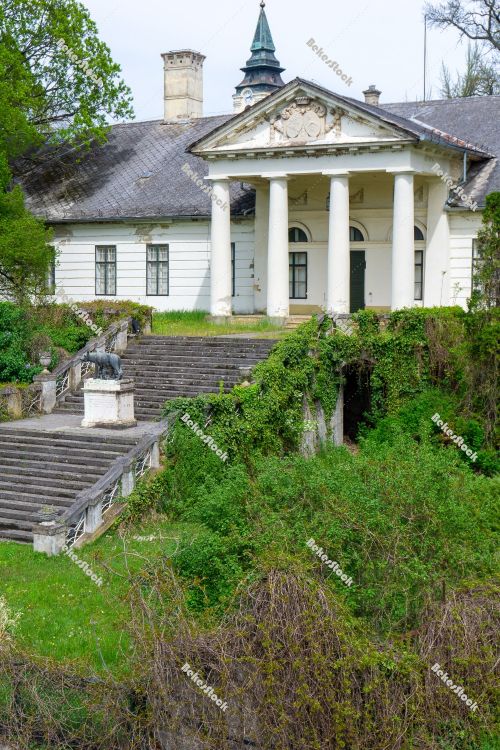
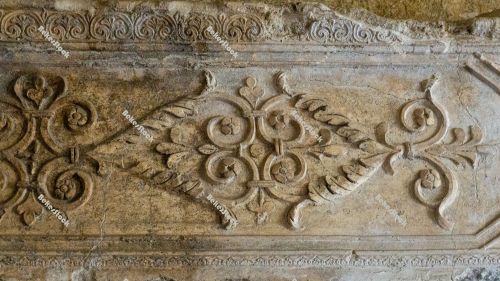
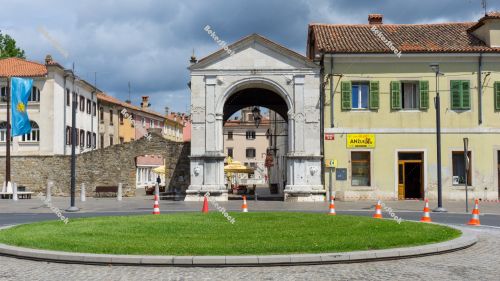
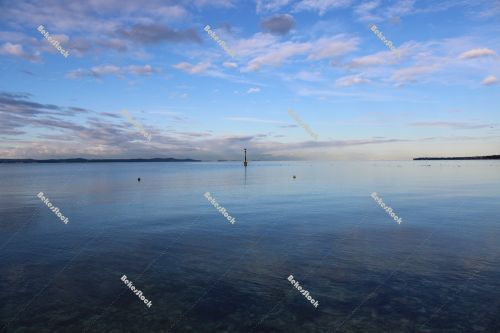
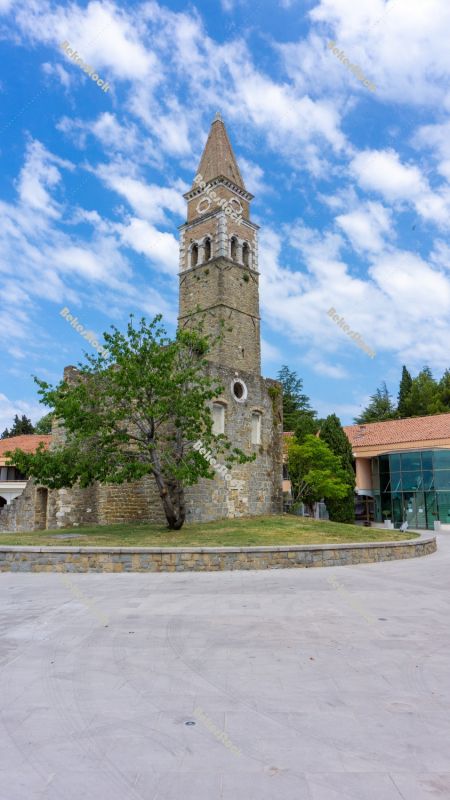

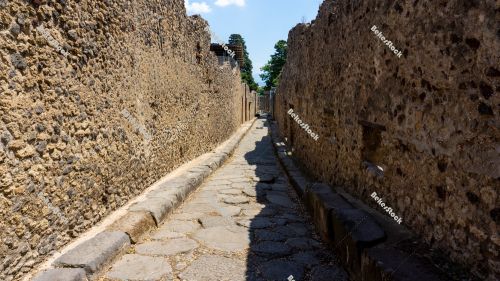
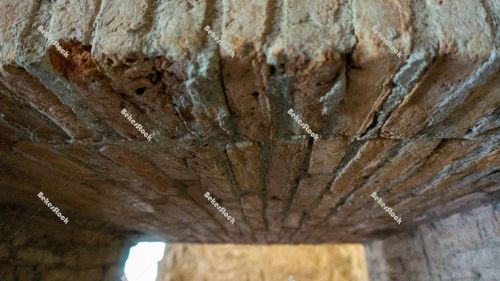
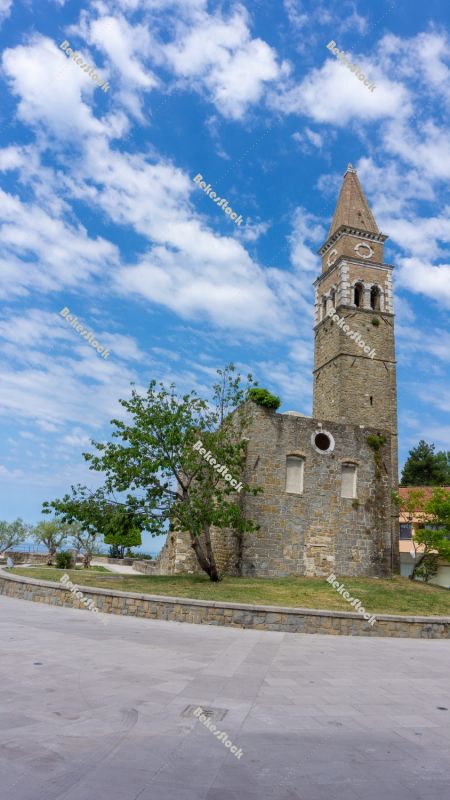
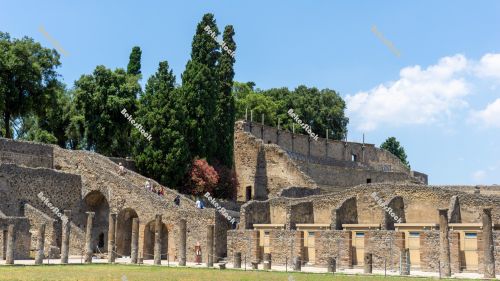

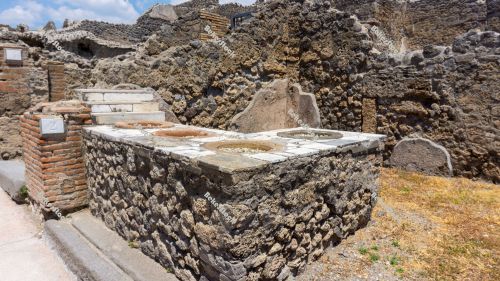
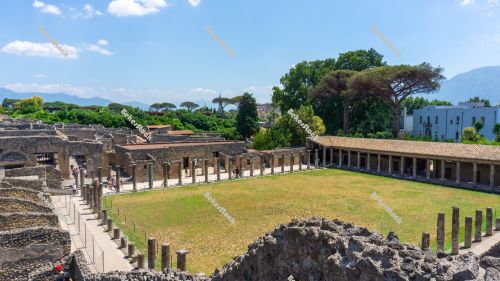

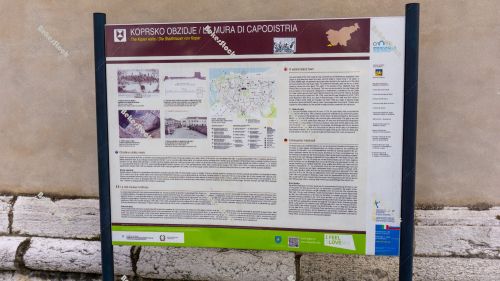
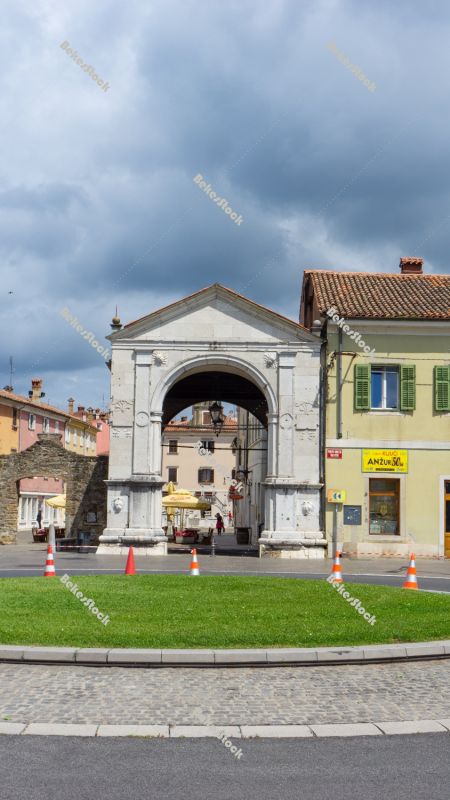

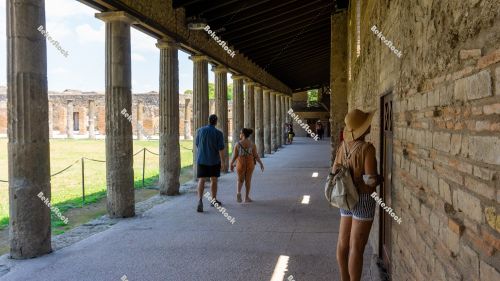

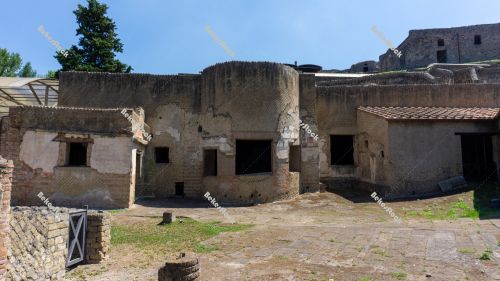
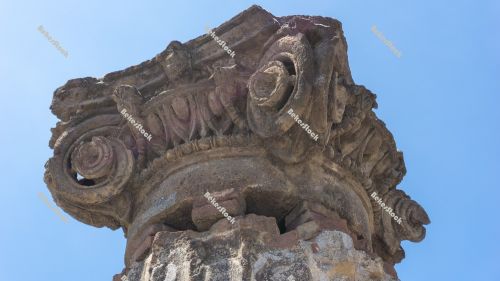

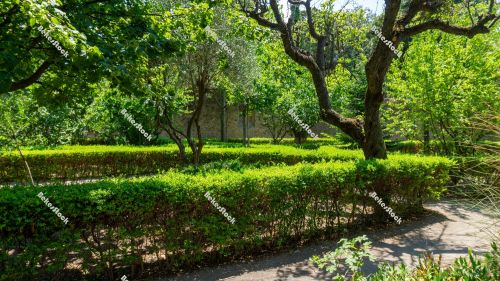
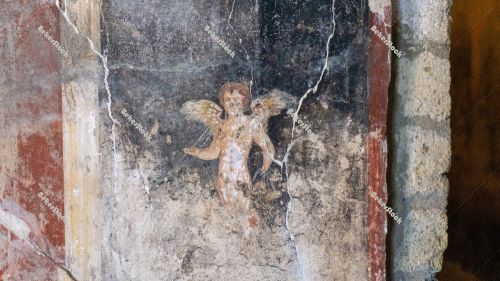
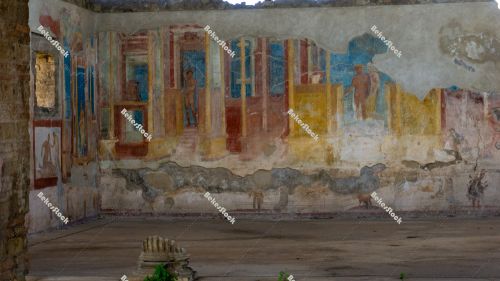
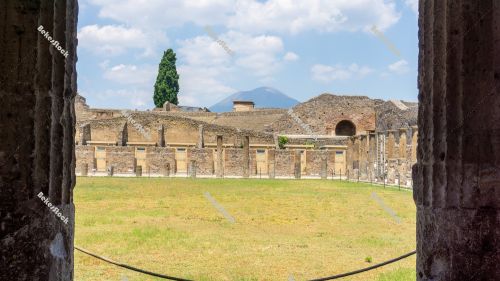

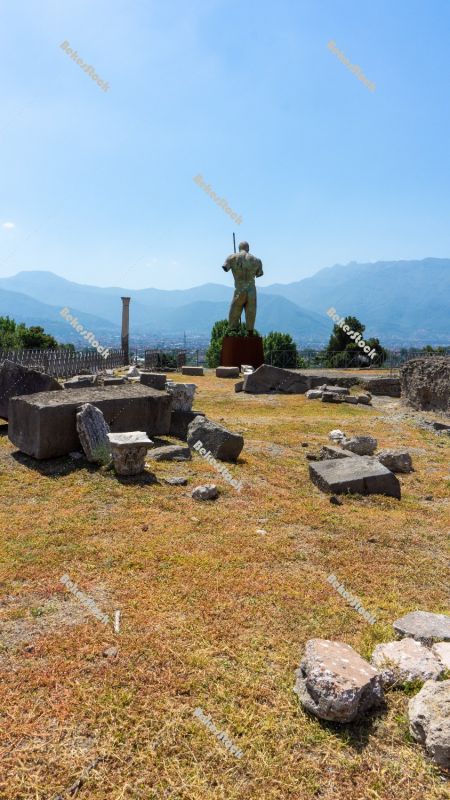
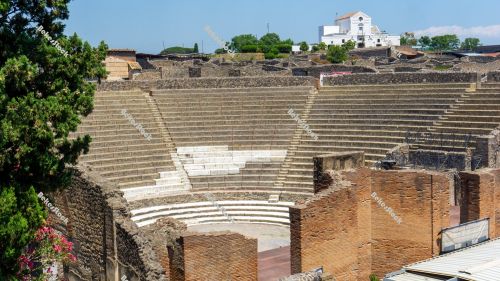
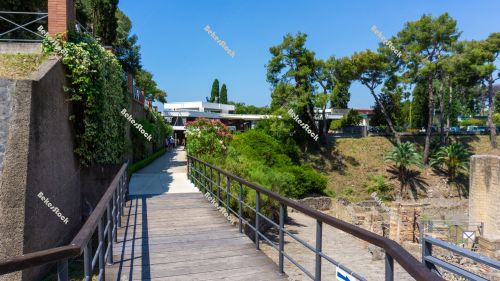
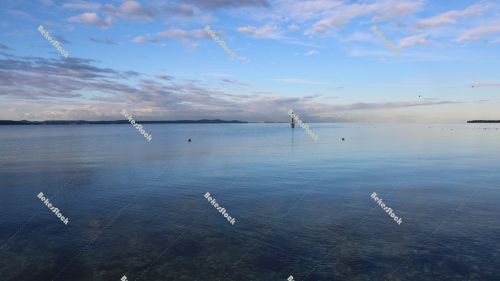

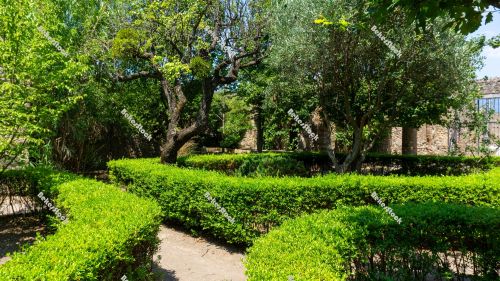

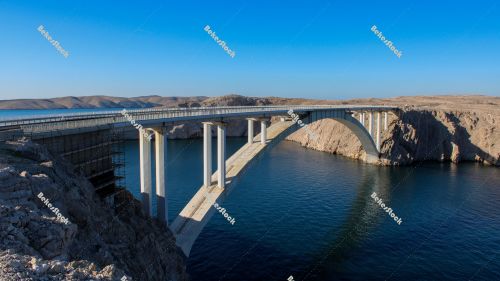
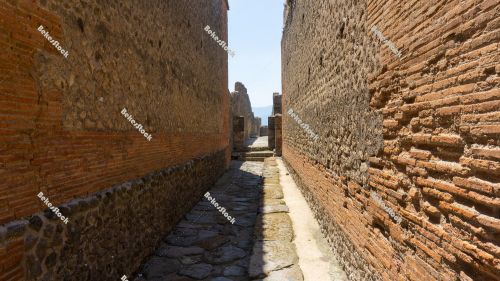



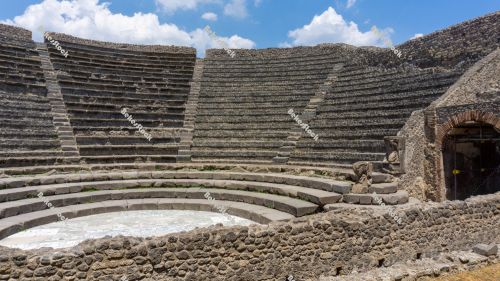
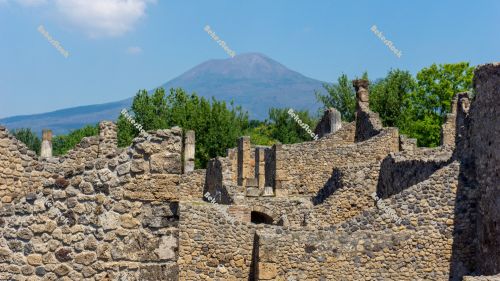
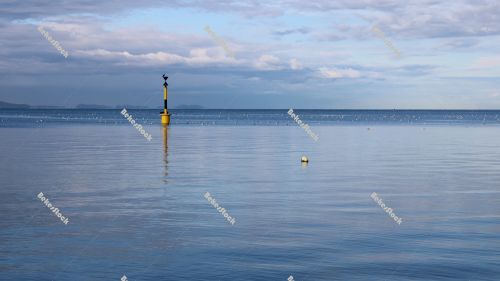

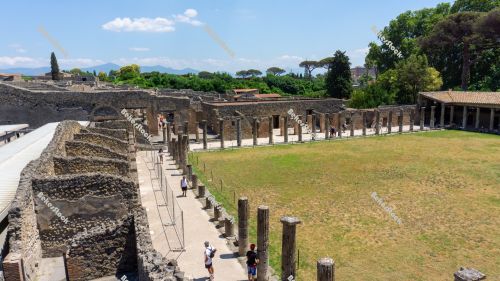





-
 Bolza Castle (`Bolza-kastély`). Szarvas, Bekes County, Hungary
Bolza Castle (`Bolza-kastély`). Szarvas, Bekes County, Hungary -
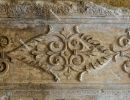 Wall decoration, stucco in the Suburban Baths in Pompeii. Pompei
Wall decoration, stucco in the Suburban Baths in Pompeii. Pompei -
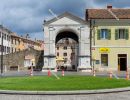 The Muda city gate (`Vrata Muda`). Koper, Slovenia, June 2020
The Muda city gate (`Vrata Muda`). Koper, Slovenia, June 2020 -
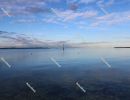 Buoy on the Adriatic coast, Zadar, December 2019.
Buoy on the Adriatic coast, Zadar, December 2019. -
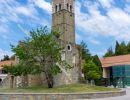 Church of St Bernardine - 'Cerkev sv. Bernardina', Portoroz, Pir
Church of St Bernardine - 'Cerkev sv. Bernardina', Portoroz, Pir -
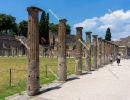 Cloister - QUADRIPORTICUS OF THE THEATRES OR GLADIATORS BARRACKS
Cloister - QUADRIPORTICUS OF THE THEATRES OR GLADIATORS BARRACKS -
 Street (`via`) in Pompeii. The narrow street is lined with stone
Street (`via`) in Pompeii. The narrow street is lined with stone -
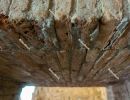 The door is a brick ceiling in the Suburban Baths in Pompeii. Po
The door is a brick ceiling in the Suburban Baths in Pompeii. Po -
 Church of St Bernardine - 'Cerkev sv. Bernardina', Portoroz, Pir
Church of St Bernardine - 'Cerkev sv. Bernardina', Portoroz, Pir -
 QUADRIPORTICUS OF THE THEATRES OR GLADIATORS BARRACKS in Pompeii
QUADRIPORTICUS OF THE THEATRES OR GLADIATORS BARRACKS in Pompeii -
 Hungarian Grey cattle head (Magyar szürke). Also known as Hunga
Hungarian Grey cattle head (Magyar szürke). Also known as Hunga -
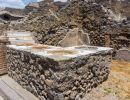 Ancient tavern (Thermopolium) in Pompeii. Pompei, Campania, Ital
Ancient tavern (Thermopolium) in Pompeii. Pompei, Campania, Ital -
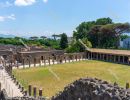 QUADRIPORTICUS OF THE THEATRES OR GLADIATORS BARRACKS in Pompeii
QUADRIPORTICUS OF THE THEATRES OR GLADIATORS BARRACKS in Pompeii -
 Mosaic decoration in the Suburban Baths in Pompeii. Pompei, Camp
Mosaic decoration in the Suburban Baths in Pompeii. Pompei, Camp -
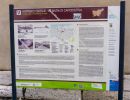 Information board - The Muda city gate (`Vrata Muda`). Koper, Sl
Information board - The Muda city gate (`Vrata Muda`). Koper, Sl -
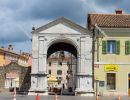 The Muda city gate (`Vrata Muda`). Koper, Slovenia, June 2020
The Muda city gate (`Vrata Muda`). Koper, Slovenia, June 2020 -
 Hungarian Grey cattle (Magyar szürke) in the corral. Also known
Hungarian Grey cattle (Magyar szürke) in the corral. Also known -
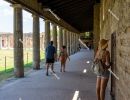 Cloister - QUADRIPORTICUS OF THE THEATRES OR GLADIATORS BARRACKS
Cloister - QUADRIPORTICUS OF THE THEATRES OR GLADIATORS BARRACKS -
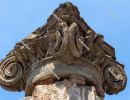 Ancient Roman column capital (head) with blue sky in the backgro
Ancient Roman column capital (head) with blue sky in the backgro -
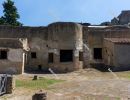 The Suburban Baths in Pompeii. Pompei, Campania, Italy, July 202
The Suburban Baths in Pompeii. Pompei, Campania, Italy, July 202 -
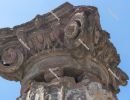 Ancient Roman column capital (head) with blue sky in the backgro
Ancient Roman column capital (head) with blue sky in the backgro -
 Bolza Castle (`Bolza-kastély`). Szarvas, Bekes County, Hungary
Bolza Castle (`Bolza-kastély`). Szarvas, Bekes County, Hungary -
 Botanical Garden (`Orto Botanico`) in Pompeii. Pompei, Campania,
Botanical Garden (`Orto Botanico`) in Pompeii. Pompei, Campania, -
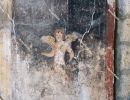 Detail of a fresco in the Suburban Baths in Pompeii. Pompei, Cam
Detail of a fresco in the Suburban Baths in Pompeii. Pompei, Cam -
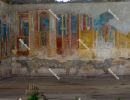 GYMNASIUM OF THE IUVENES. The entrance of the Gymnasium is locat
GYMNASIUM OF THE IUVENES. The entrance of the Gymnasium is locat -
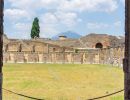 The view of Vesuvius from the Gladiators' Barracks. Pompei, Camp
The view of Vesuvius from the Gladiators' Barracks. Pompei, Camp -
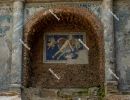 Fake cave, adorned with a mosaic in the Suburban Baths in Pompei
Fake cave, adorned with a mosaic in the Suburban Baths in Pompei -
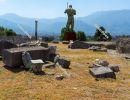 Sanctuary of Venus with bronze statue of Daedalus (`Dedalo`) in
Sanctuary of Venus with bronze statue of Daedalus (`Dedalo`) in -
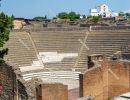 Large Theatre (`Teatro Grande`) in Pompeii. Pompei, Campania, It
Large Theatre (`Teatro Grande`) in Pompeii. Pompei, Campania, It -
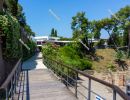 Ticket office in the Archaeological Park of Pompeii, photographe
Ticket office in the Archaeological Park of Pompeii, photographe -
 Buoy on the Adriatic coast, Zadar, December 2019
Buoy on the Adriatic coast, Zadar, December 2019 -
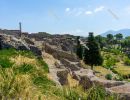 Bronze statue of Daedalus (`Dedalo`) on the terrace of the Sanct
Bronze statue of Daedalus (`Dedalo`) on the terrace of the Sanct -
 Botanical Garden (`Orto Botanico`) in Pompeii. Pompei, Campania,
Botanical Garden (`Orto Botanico`) in Pompeii. Pompei, Campania, -
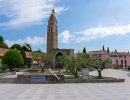 Church of St Bernardine - 'Cerkev sv. Bernardina', Portoroz, Pir
Church of St Bernardine - 'Cerkev sv. Bernardina', Portoroz, Pir -
 Paški most, Pag Bridge - Pag, Croatia, January 2020
Paški most, Pag Bridge - Pag, Croatia, January 2020 -
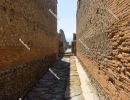 Alley way (`vicolo`) in Pompeii. The narrow street is lined with
Alley way (`vicolo`) in Pompeii. The narrow street is lined with -
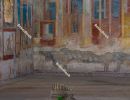 GYMNASIUM OF THE IUVENES. The entrance of the Gymnasium is locat
GYMNASIUM OF THE IUVENES. The entrance of the Gymnasium is locat -
 Small peninsula at Pag Bridge - Pag, Croatia, January 2020
Small peninsula at Pag Bridge - Pag, Croatia, January 2020 -
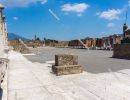 Civil Forum in Pompeii. The blue sky and Mount Vesuvius provide
Civil Forum in Pompeii. The blue sky and Mount Vesuvius provide -
 SMALL THEATRE – ODEON in Pompeii. Pompei, Campania, Italy, Jul
SMALL THEATRE – ODEON in Pompeii. Pompei, Campania, Italy, Jul -
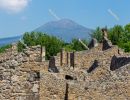 Ancient ruins of Pompeii, with Mount Vesuvius (`Vesuvio`) in the
Ancient ruins of Pompeii, with Mount Vesuvius (`Vesuvio`) in the -
 Birds rest on the respective buoy on the Adriatic coast, Zadar, December 2019
Birds rest on the respective buoy on the Adriatic coast, Zadar, December 2019 -
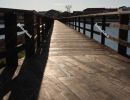 Wooden bridge, Nin, Croatia, December 2019
Wooden bridge, Nin, Croatia, December 2019 -
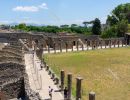 QUADRIPORTICUS OF THE THEATRES OR GLADIATORS BARRACKS in Pompeii
QUADRIPORTICUS OF THE THEATRES OR GLADIATORS BARRACKS in Pompeii -
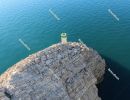 Small peninsula at Pag Bridge - Pag, Croatia, January 2020
Small peninsula at Pag Bridge - Pag, Croatia, January 2020 -
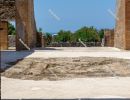 Courtyard of a building in Pompeii, with Lenader and the blue sk
Courtyard of a building in Pompeii, with Lenader and the blue sk -
 Hungarian Grey cattle head (Magyar szürke). Also known as Hunga
Hungarian Grey cattle head (Magyar szürke). Also known as Hunga -
 Paški most, Pag Bridge - Pag, Croatia, January 2020
Paški most, Pag Bridge - Pag, Croatia, January 2020 -
 Detail of a graffiti in Pompeii. Pompei, Campania, Italy, July 2
Detail of a graffiti in Pompeii. Pompei, Campania, Italy, July 2

